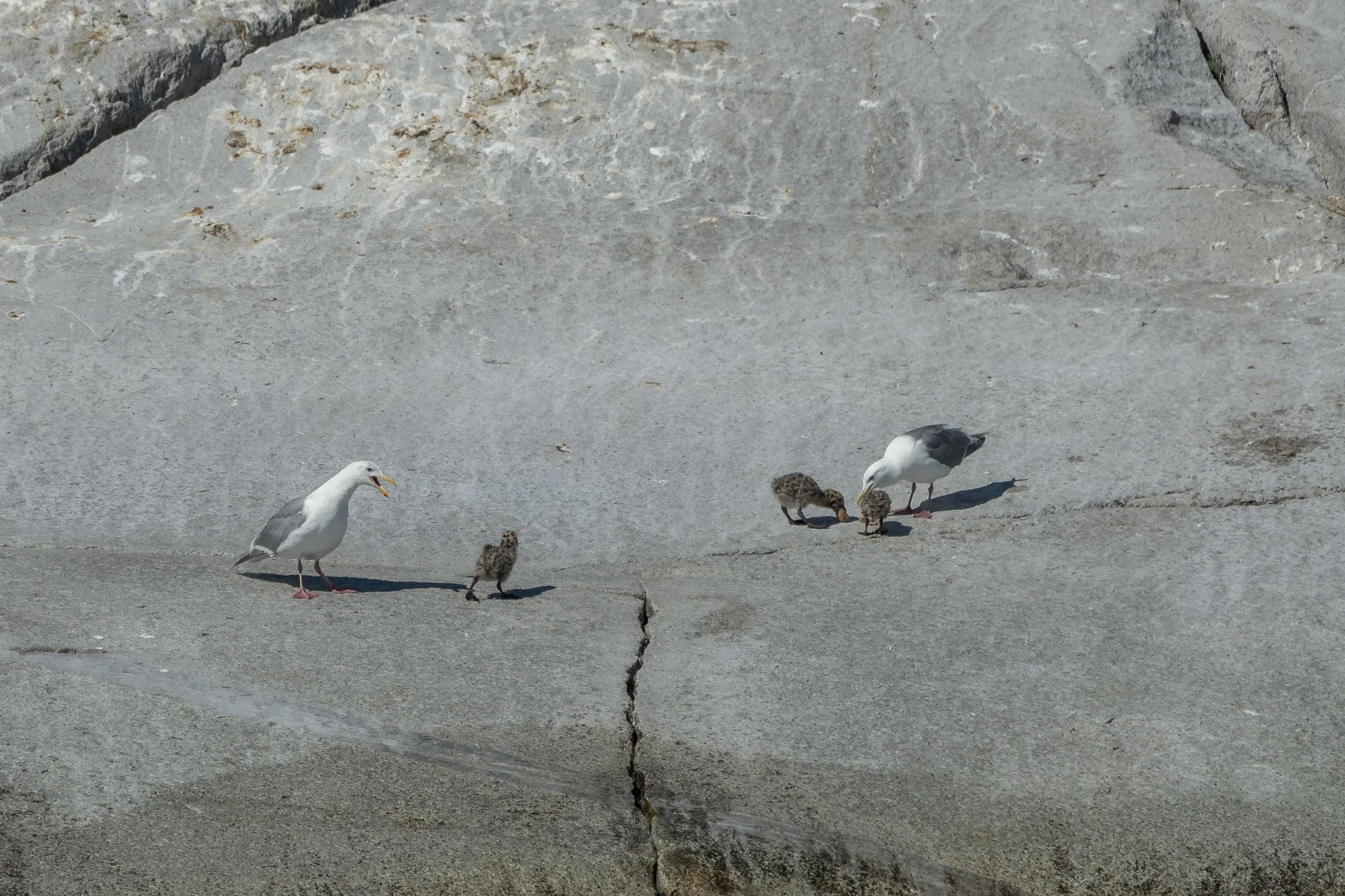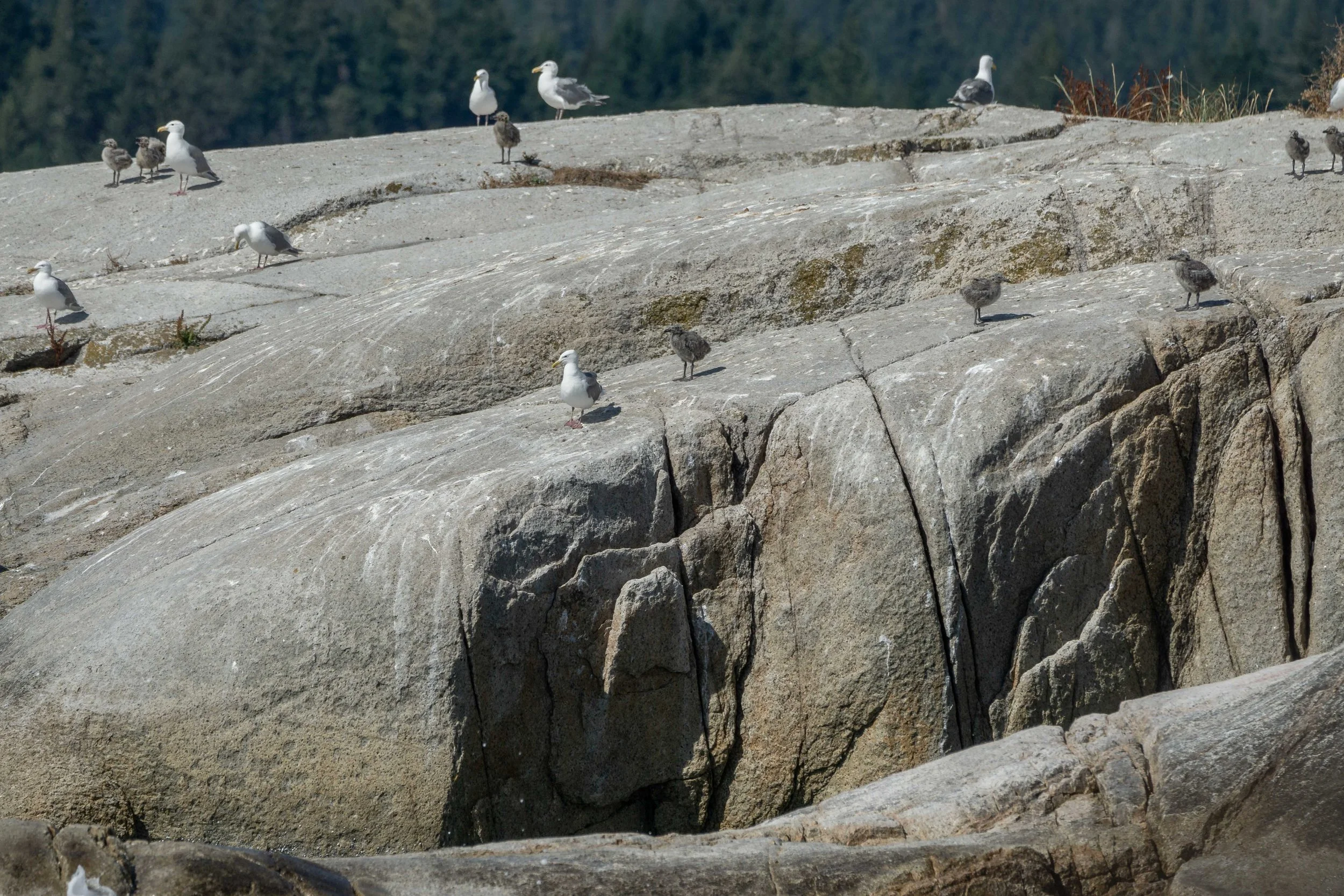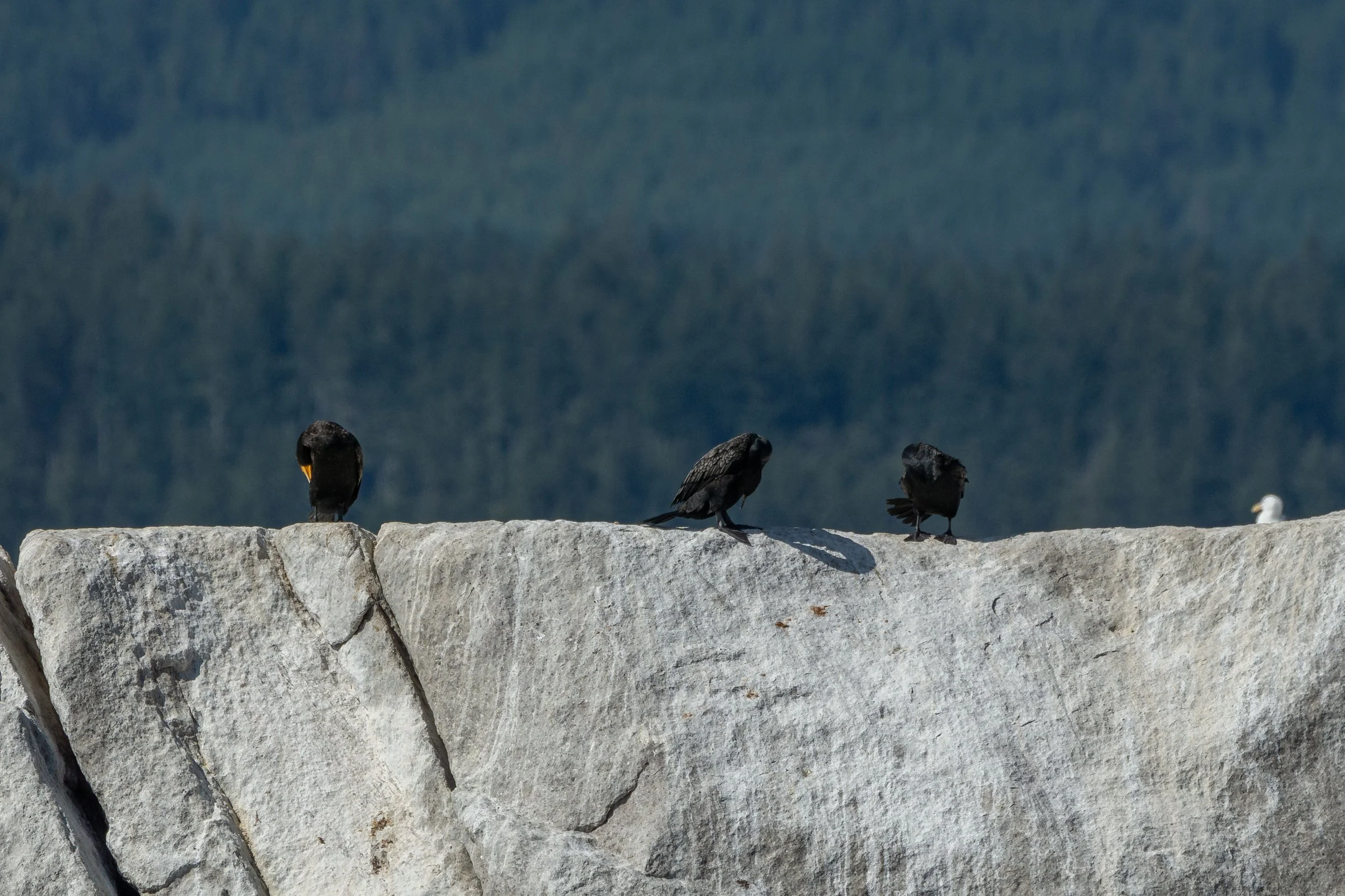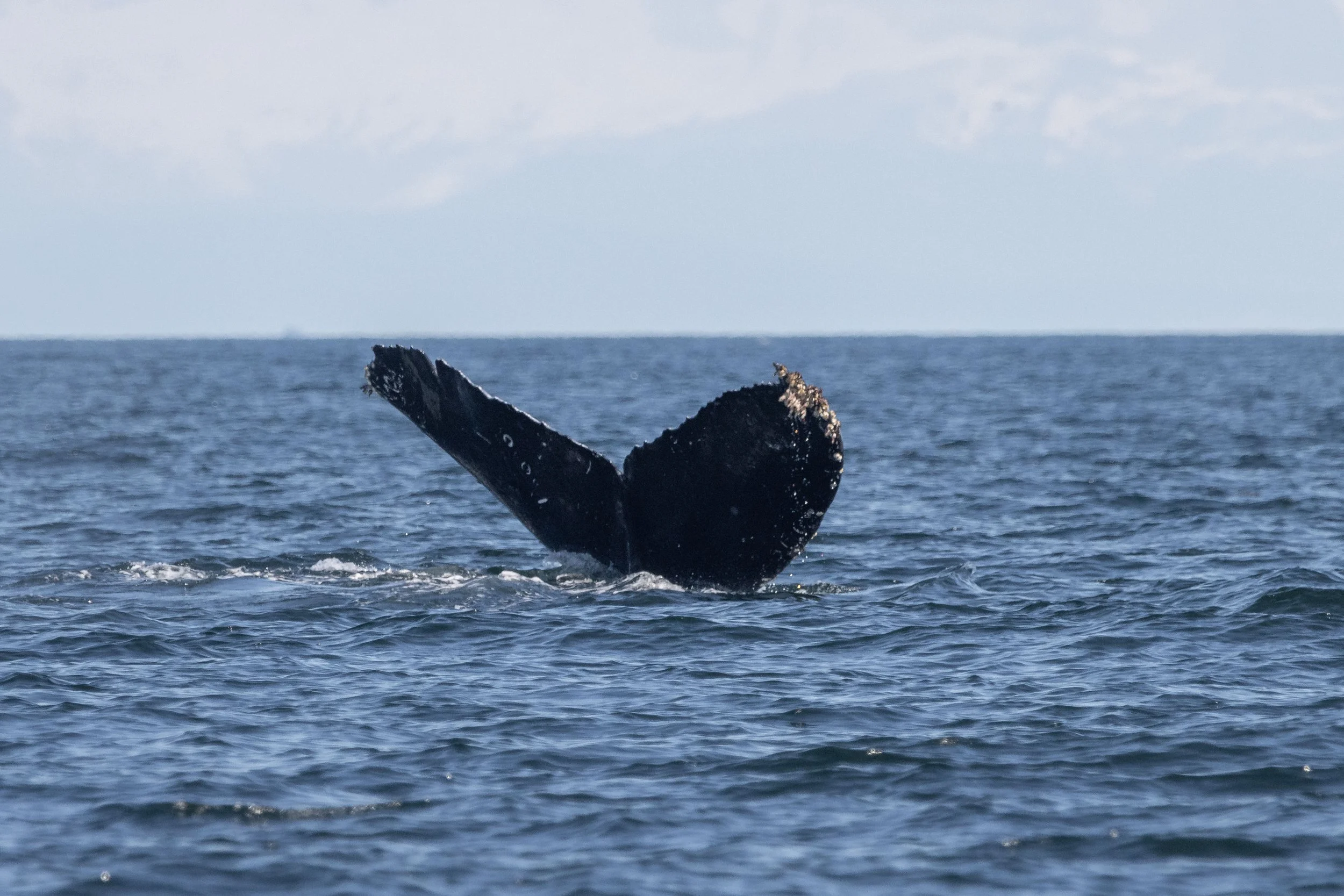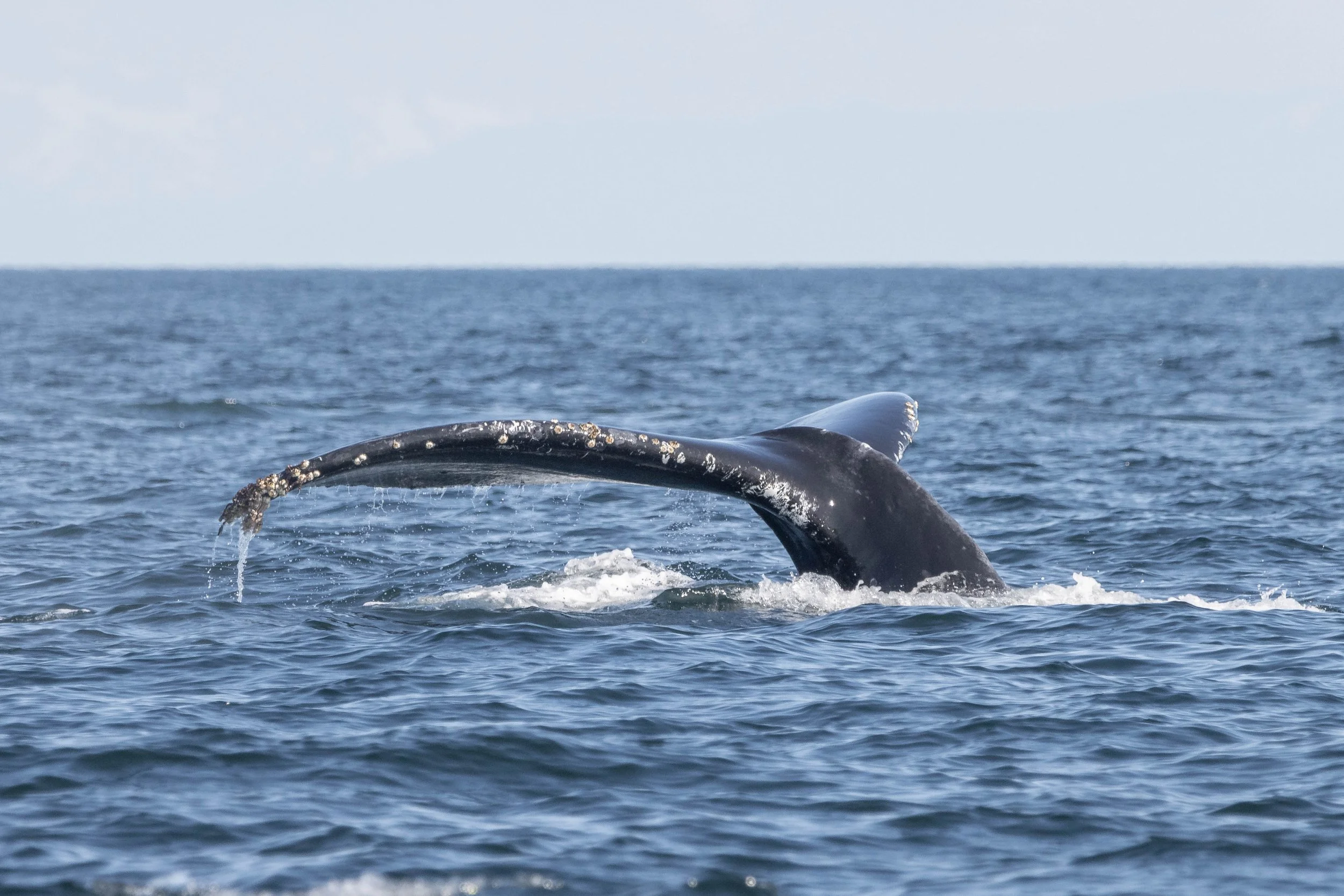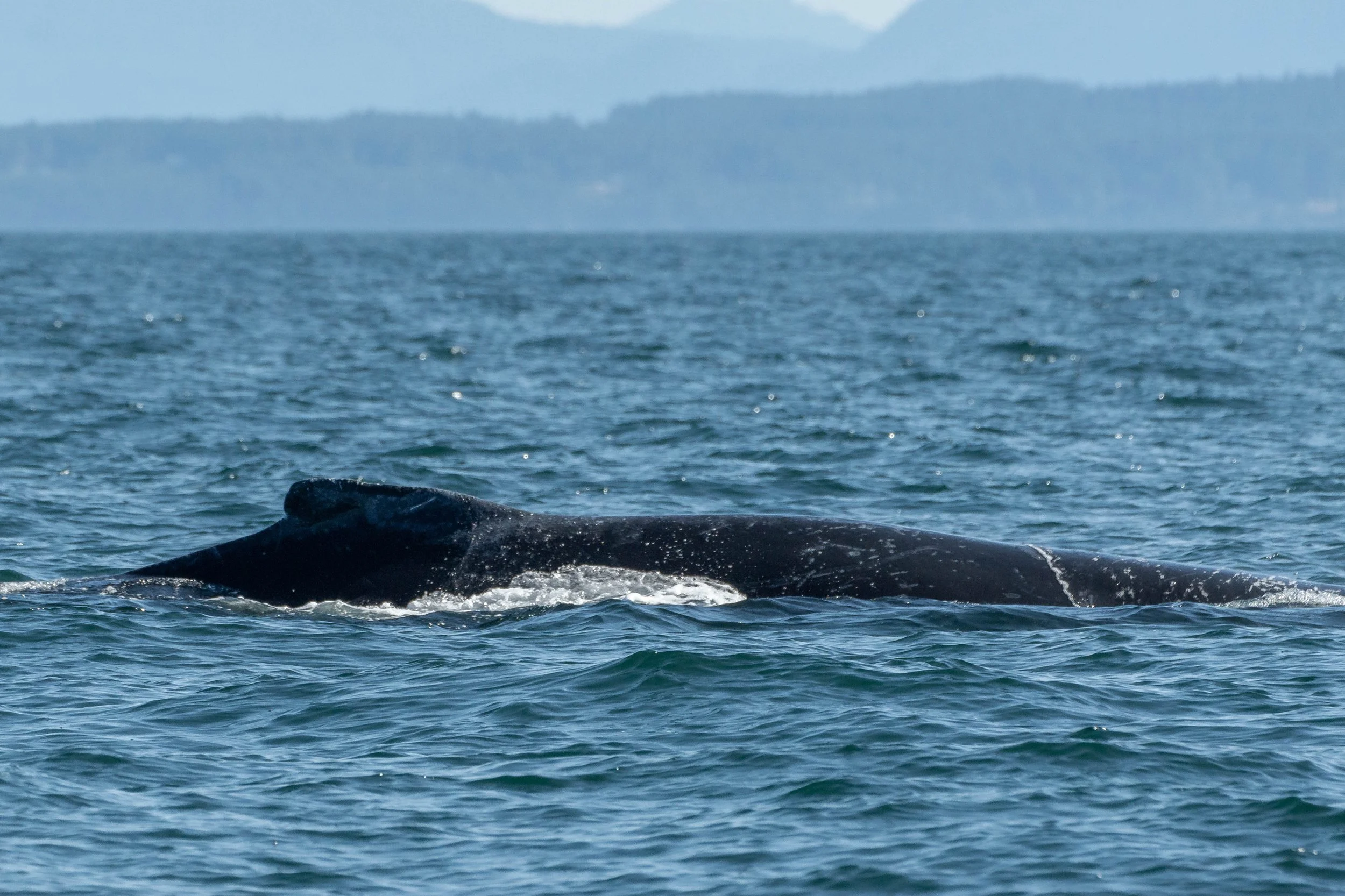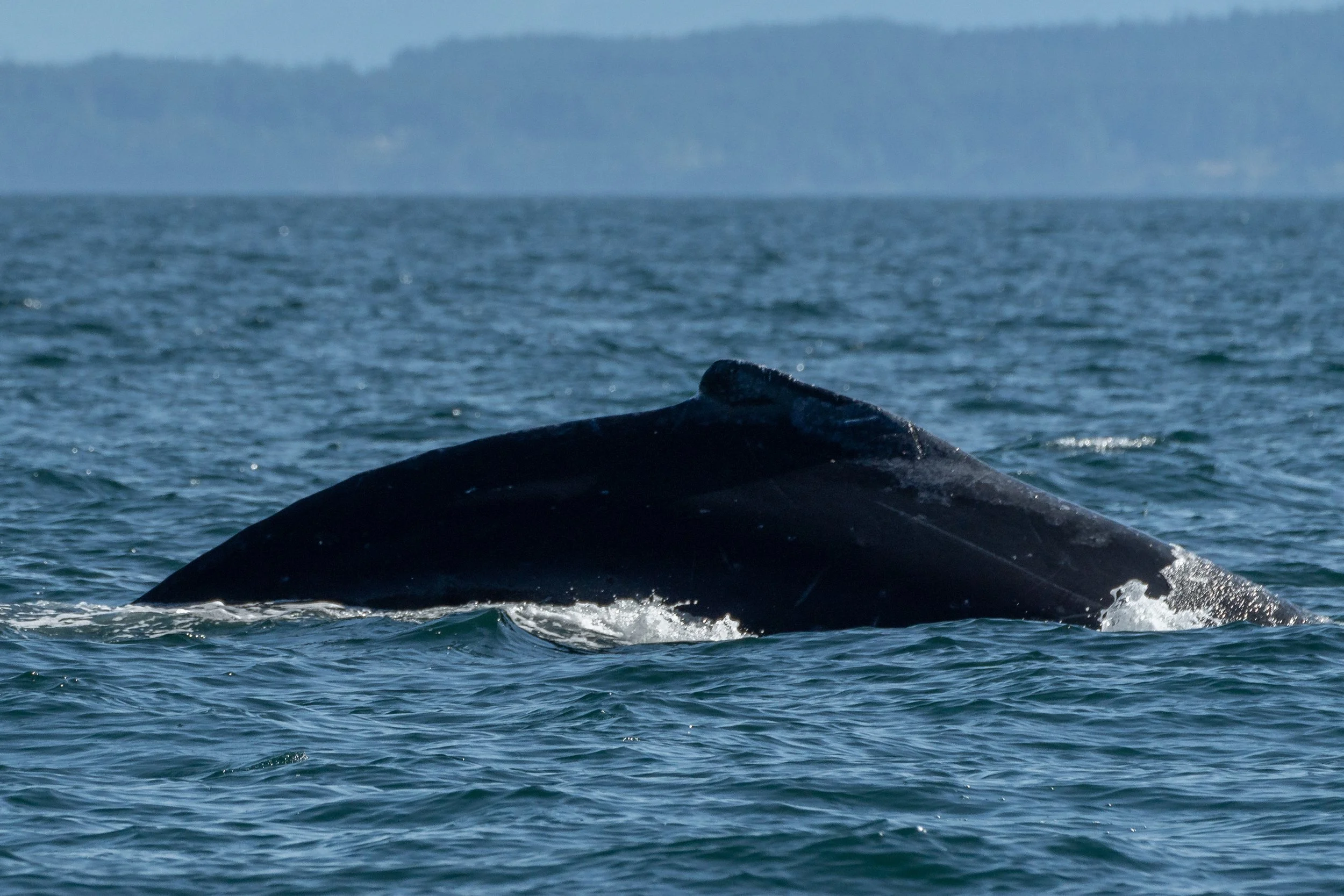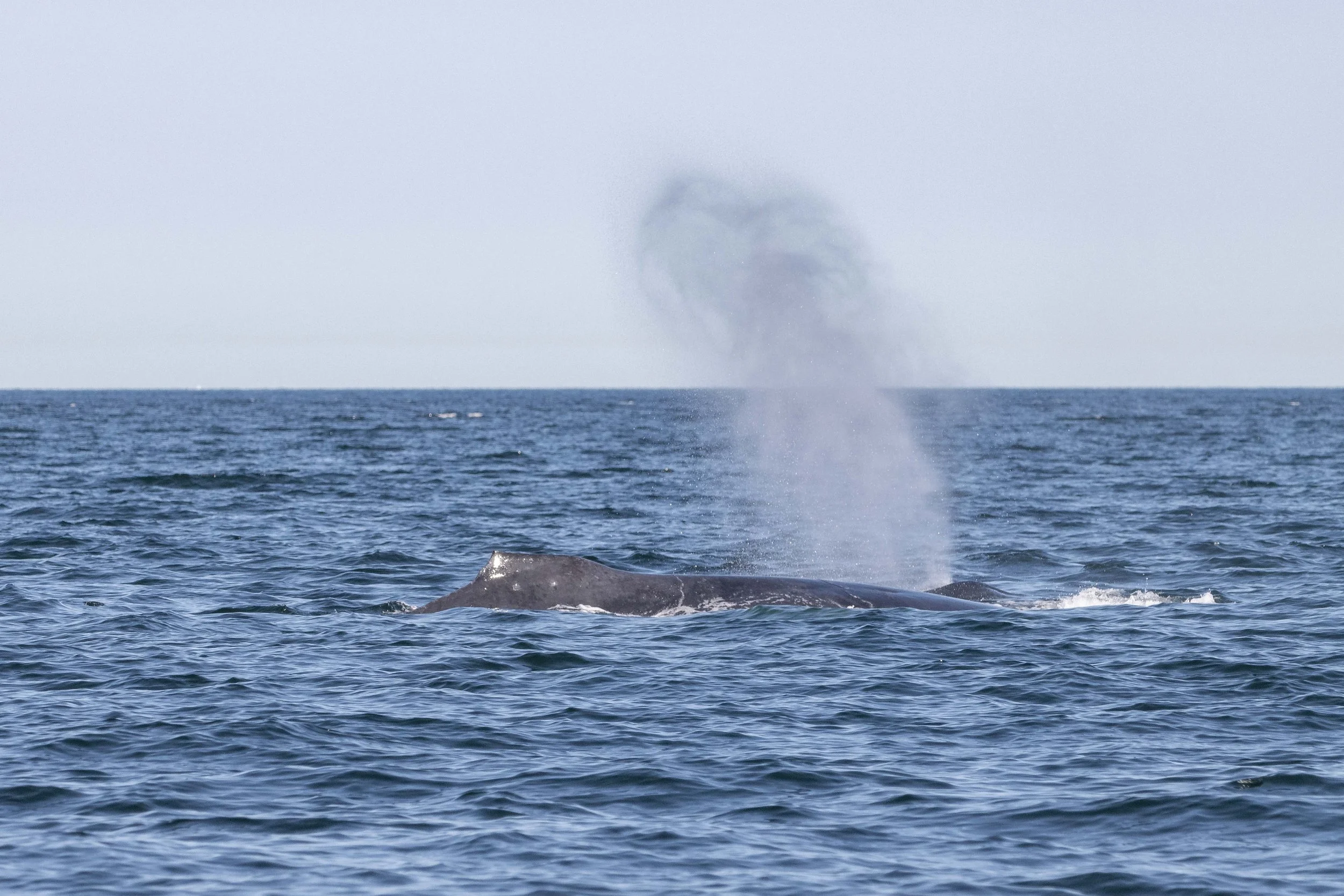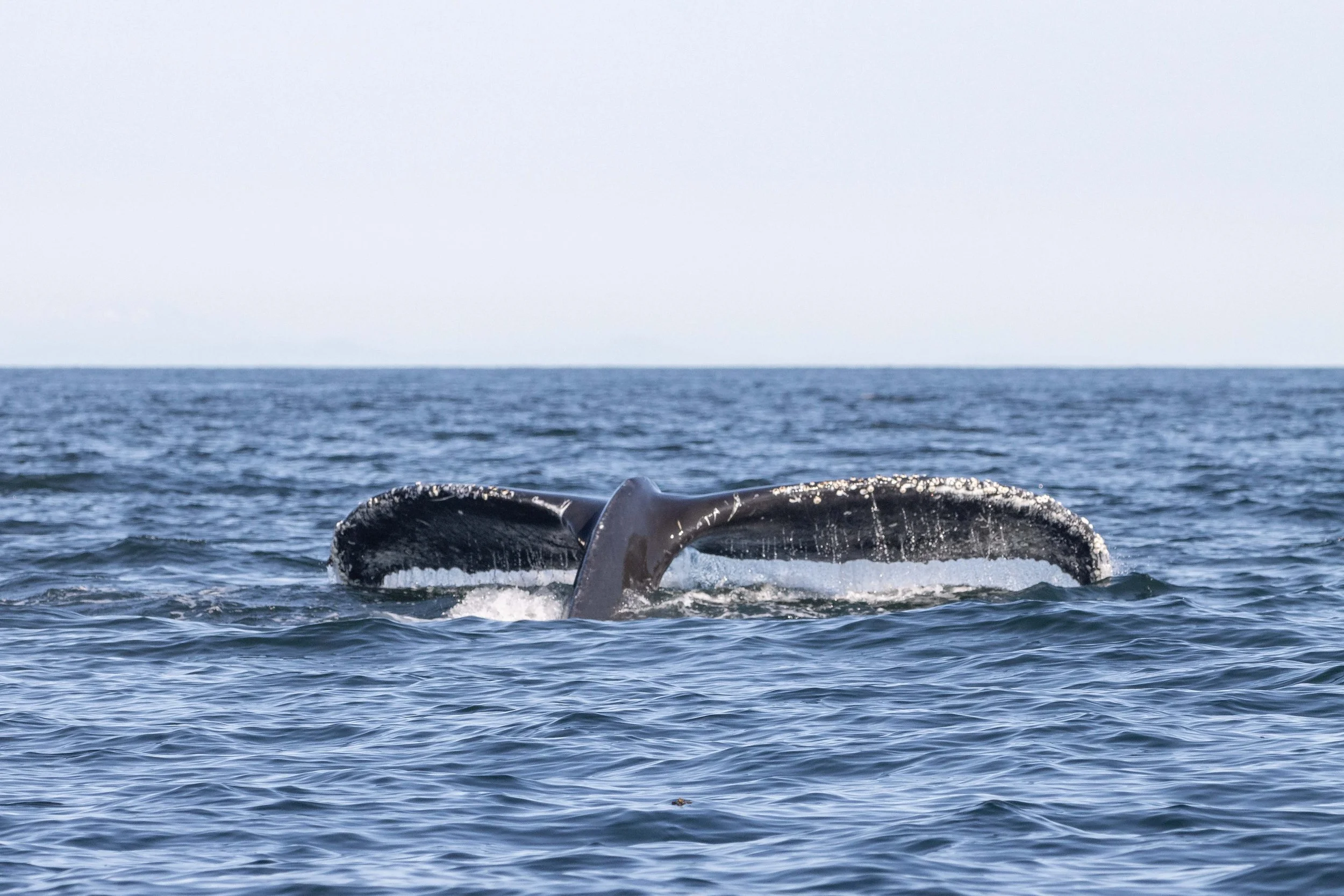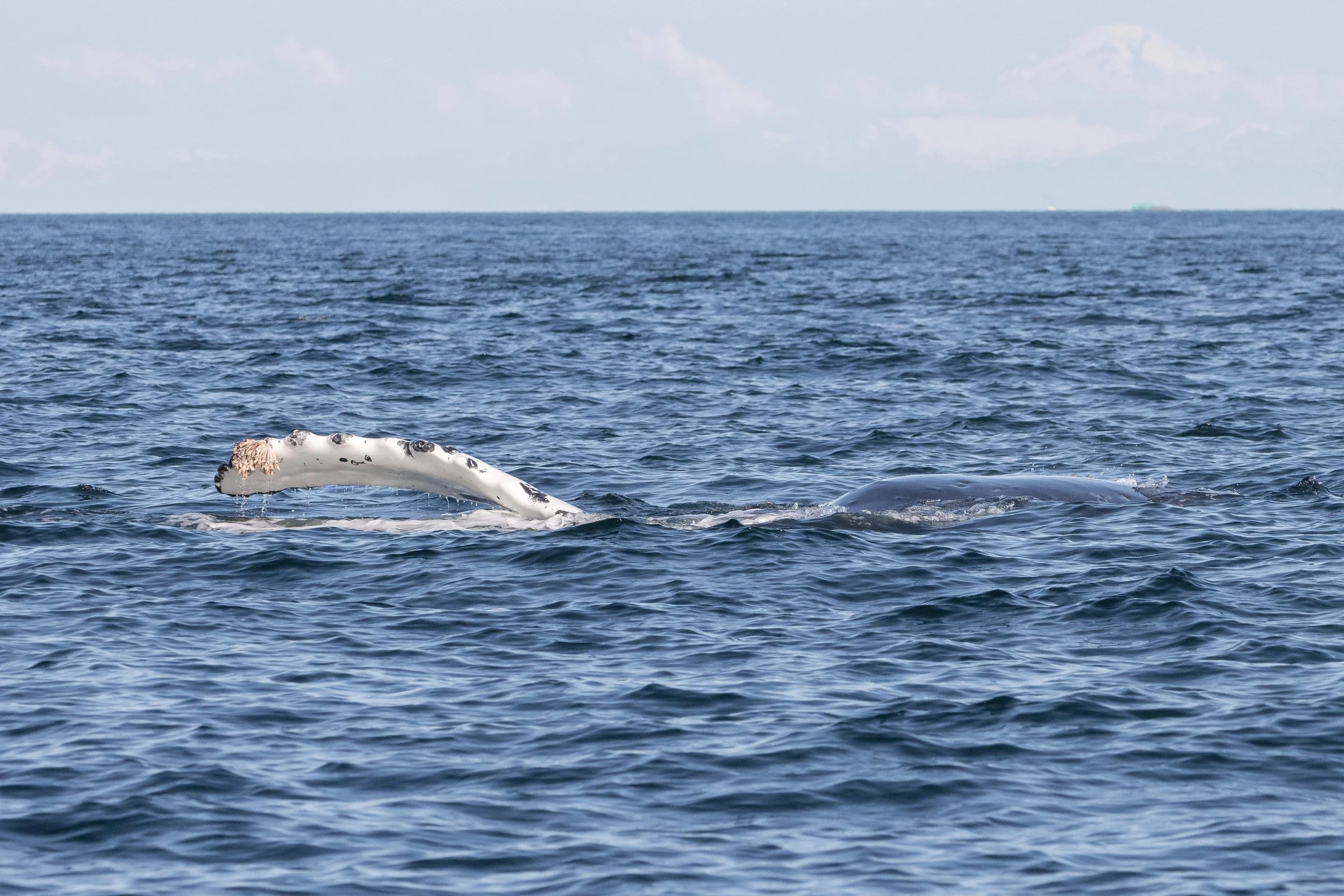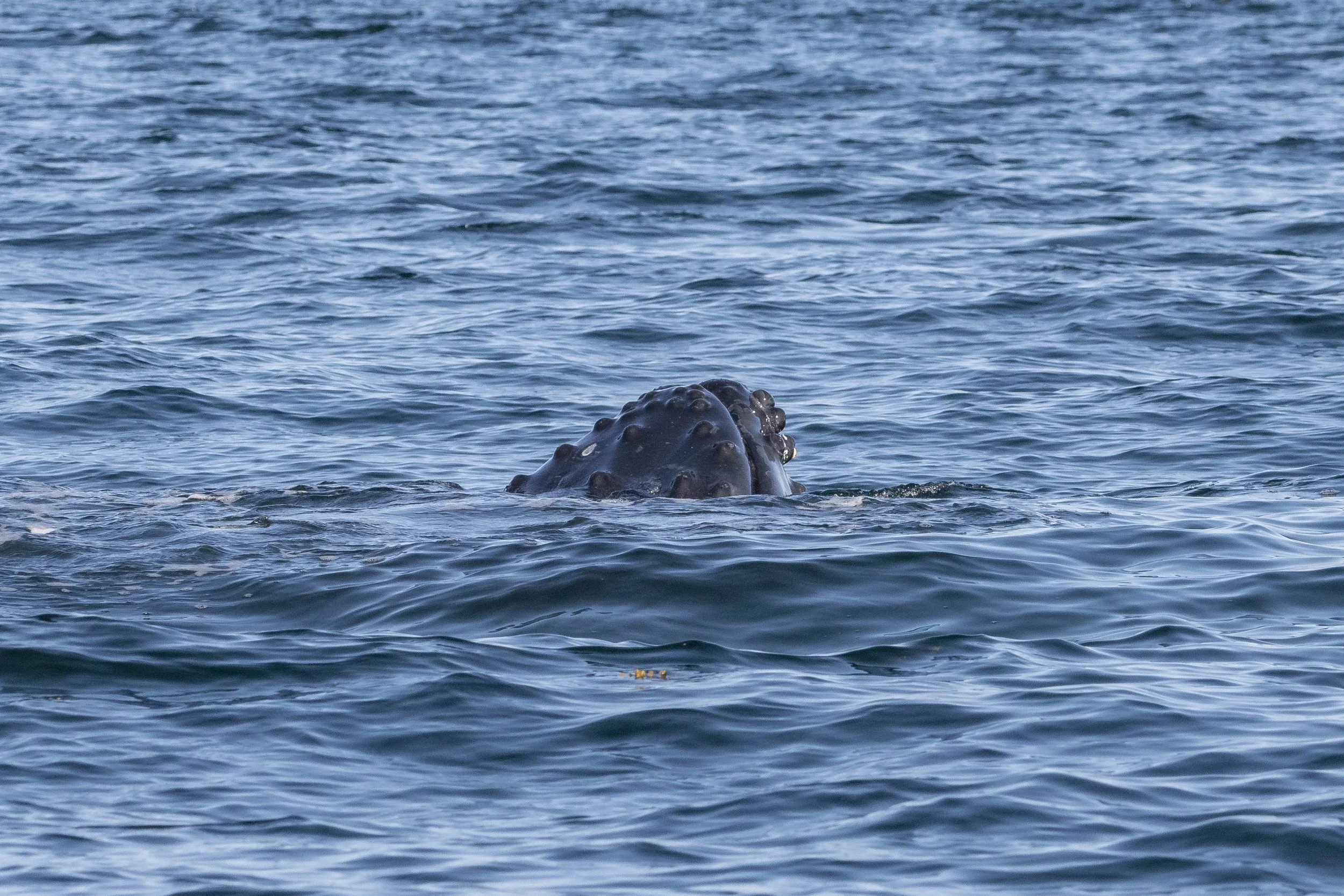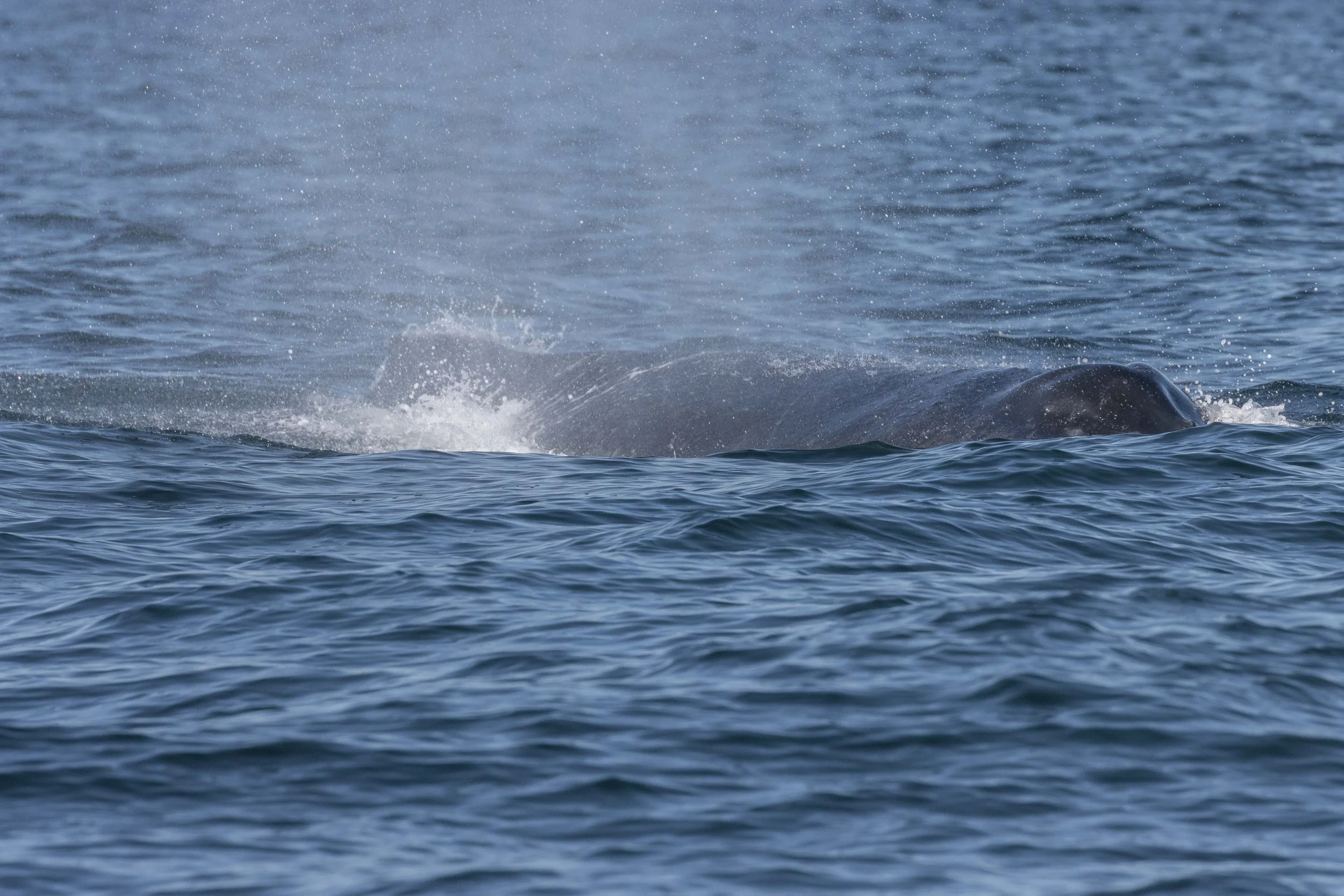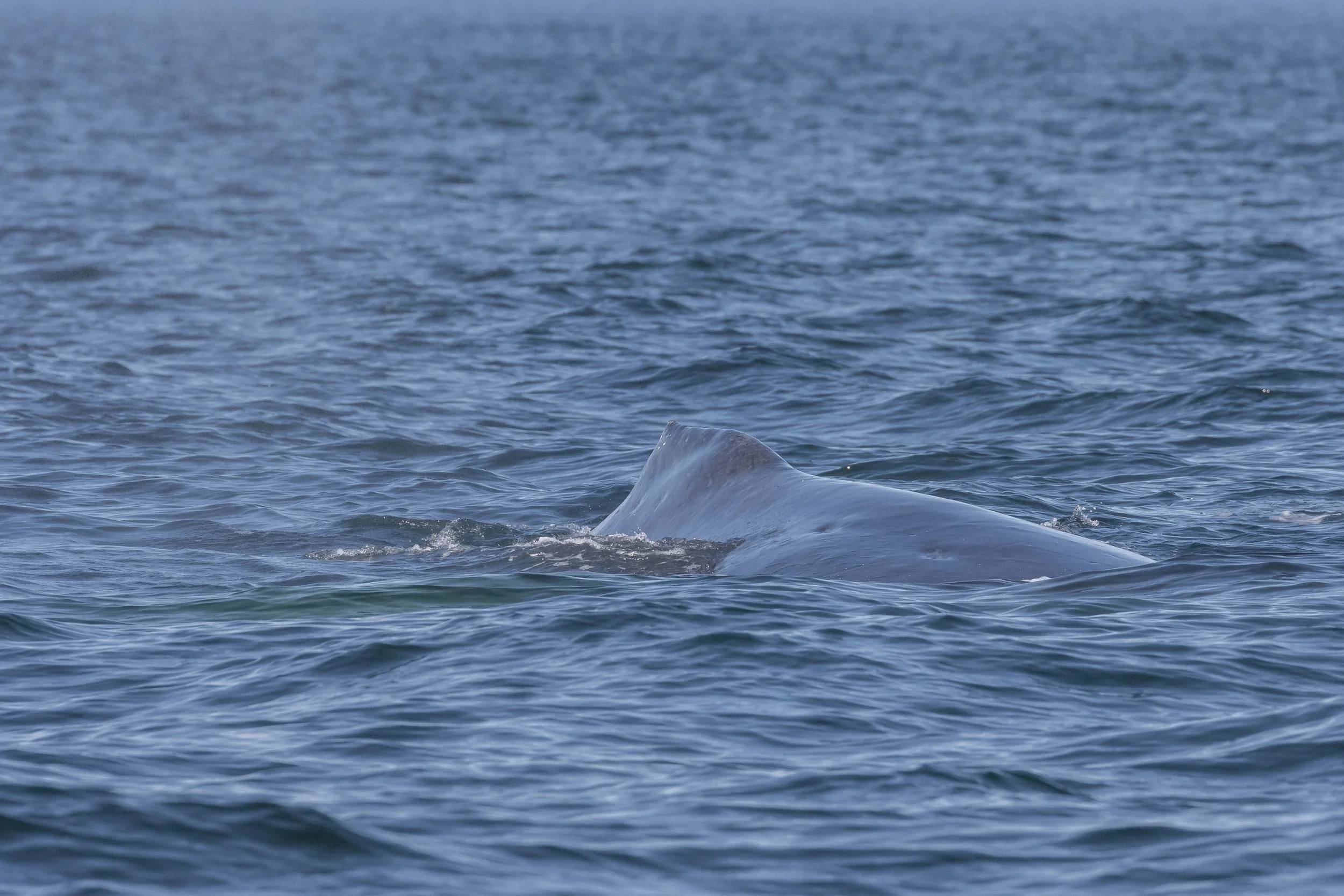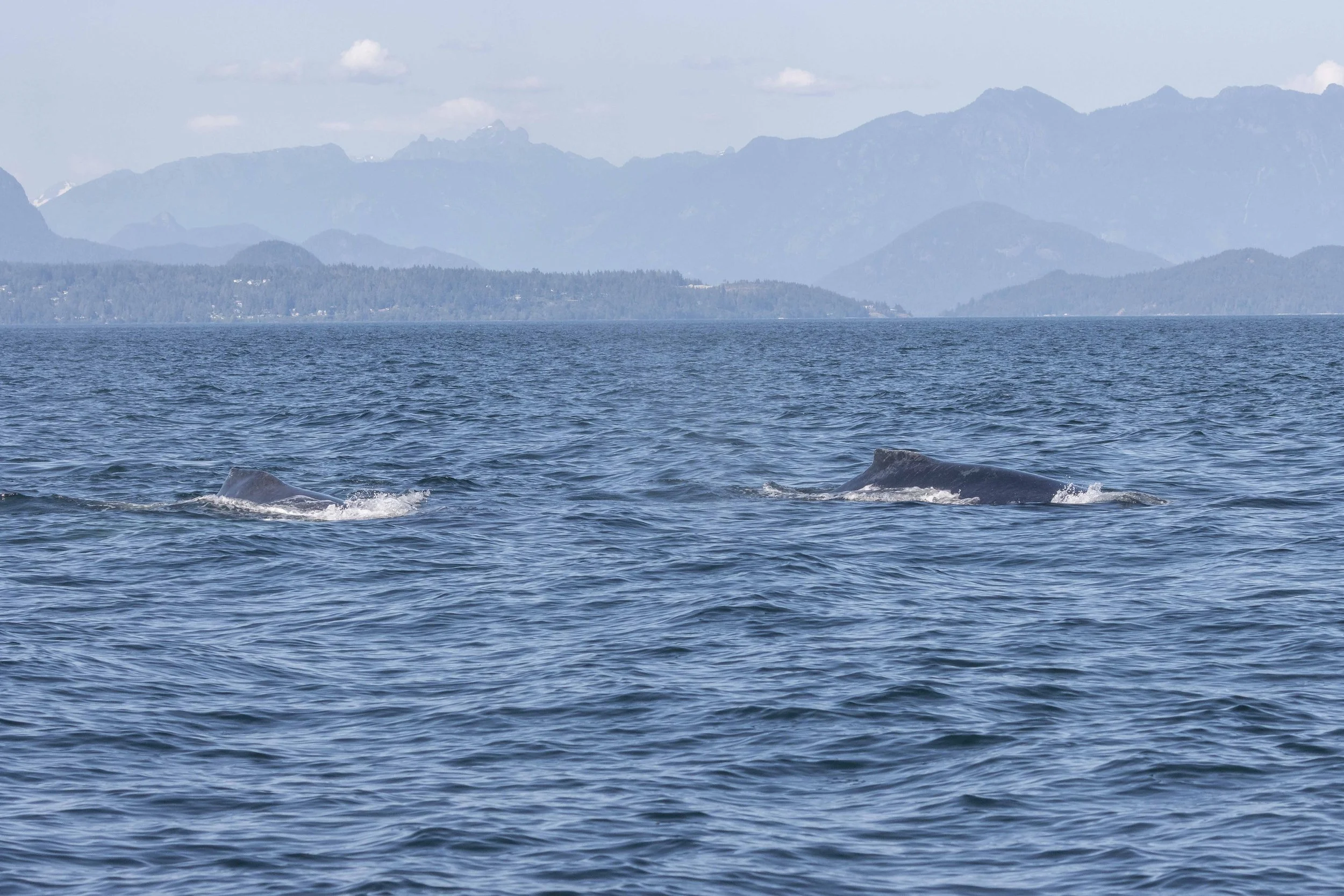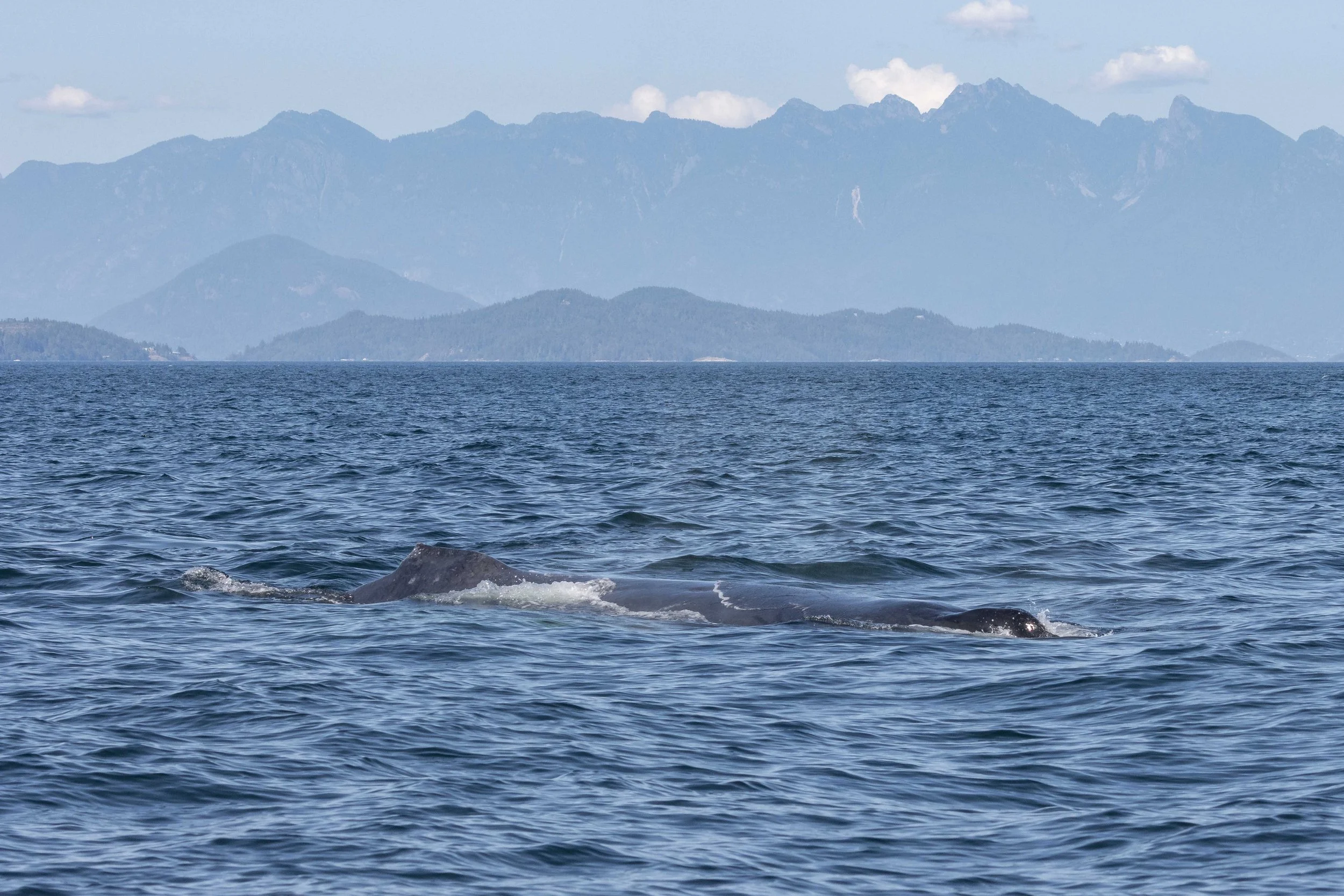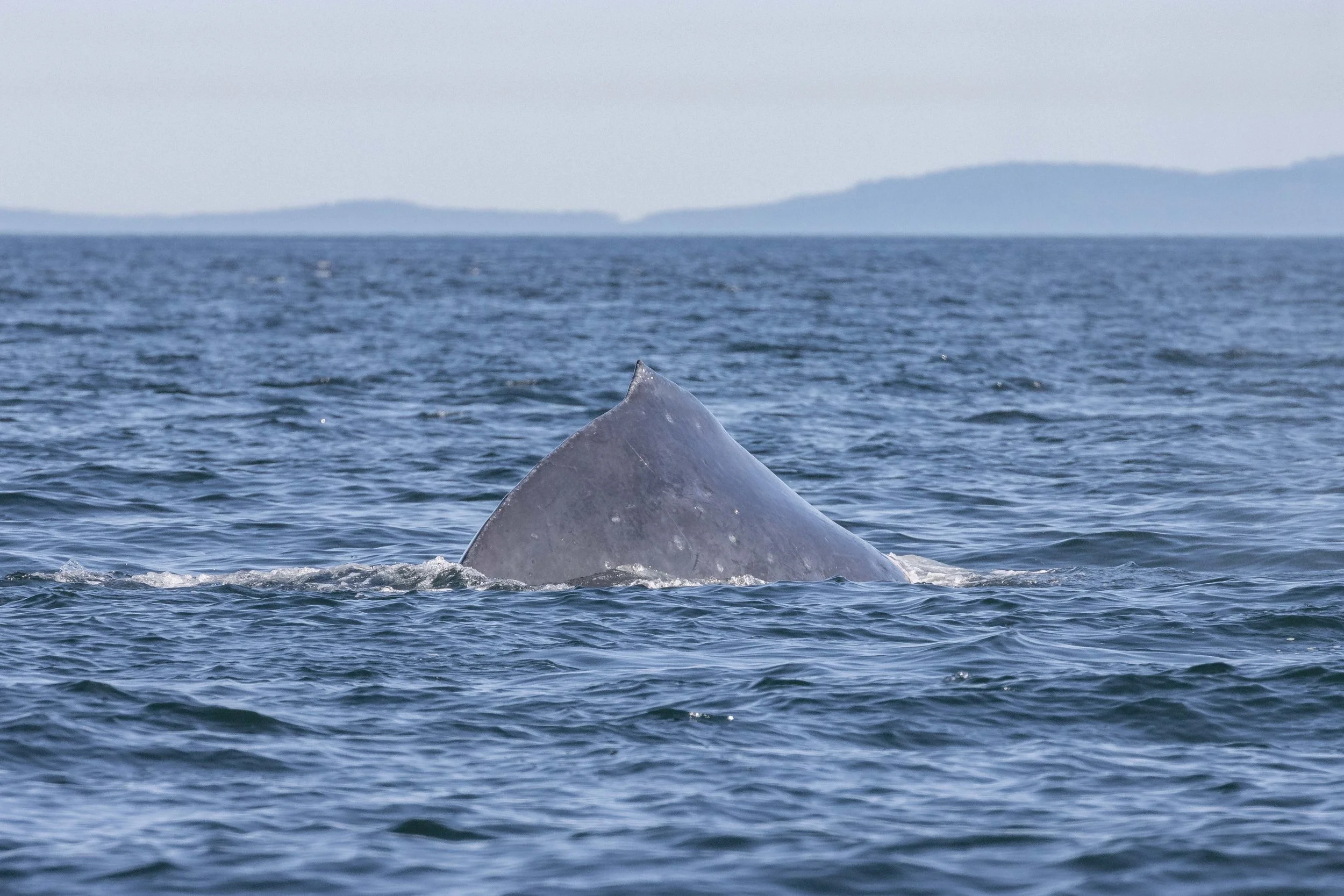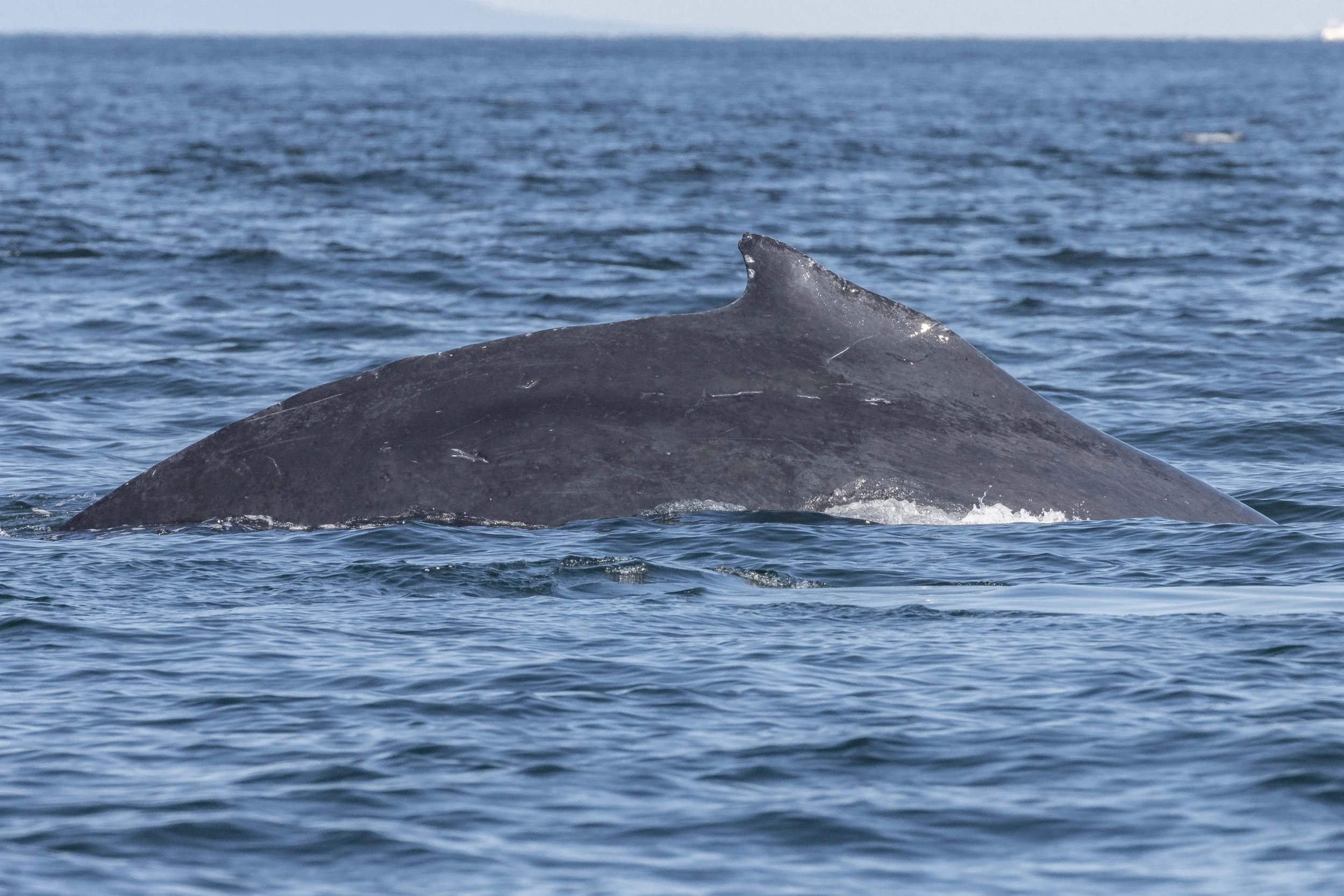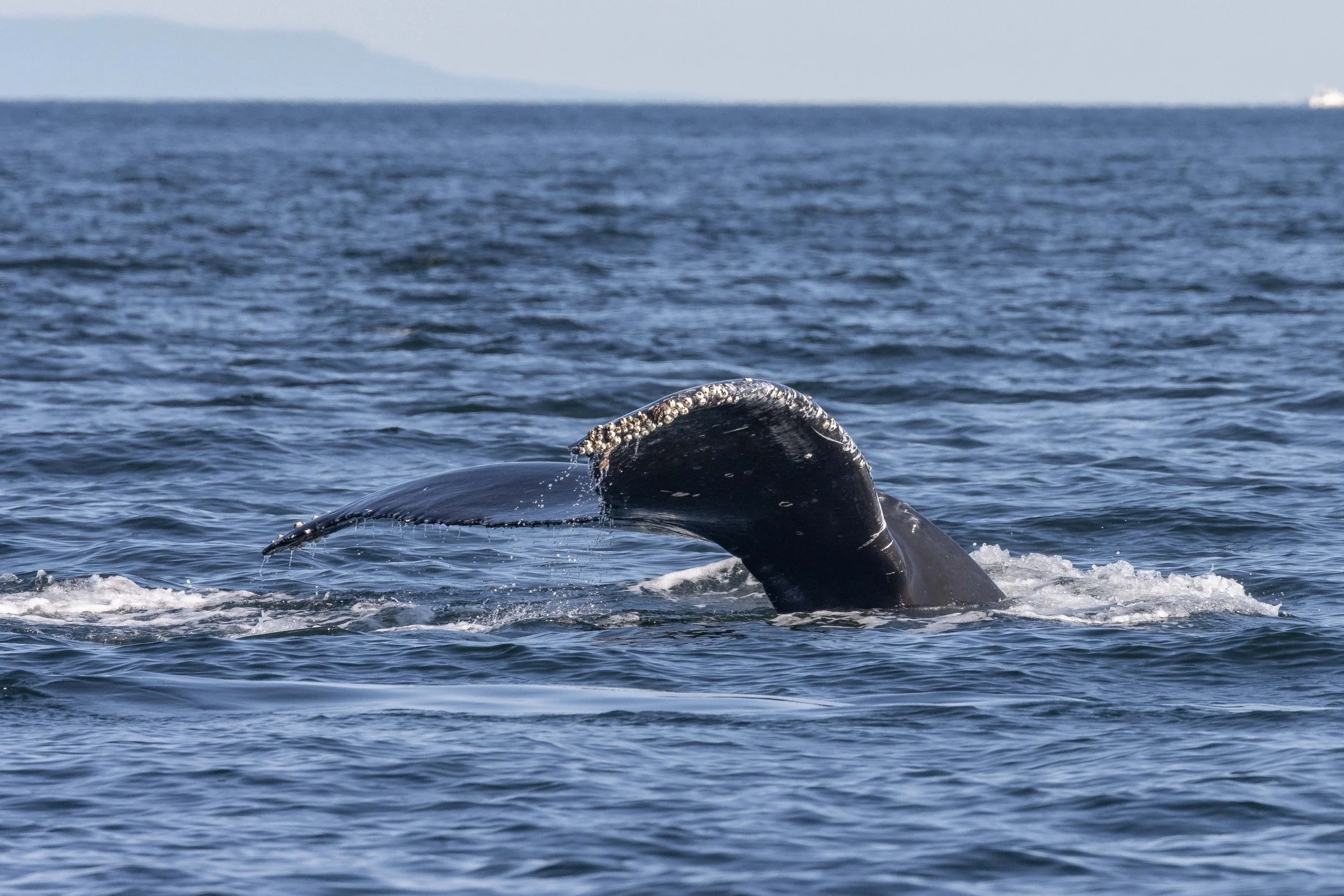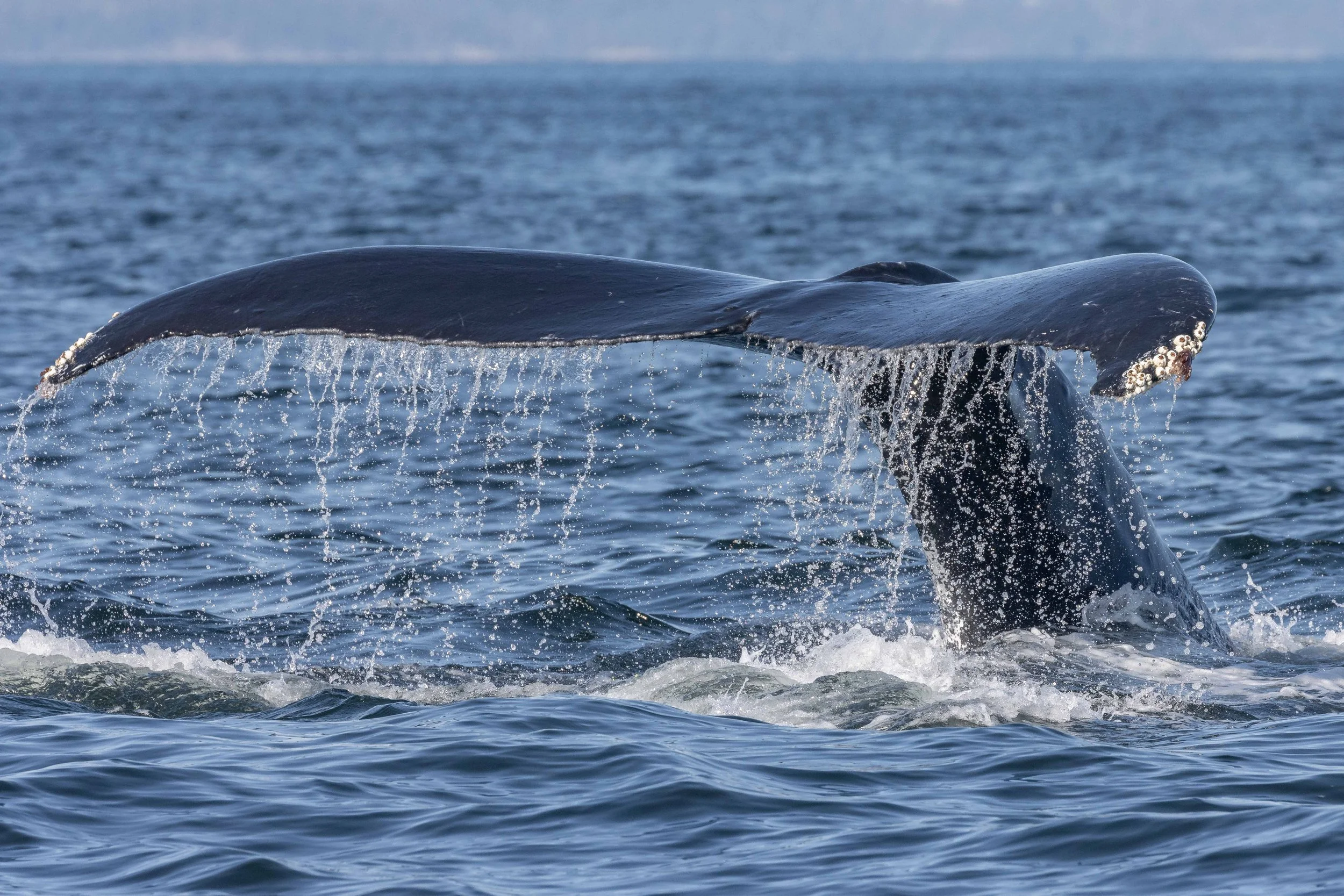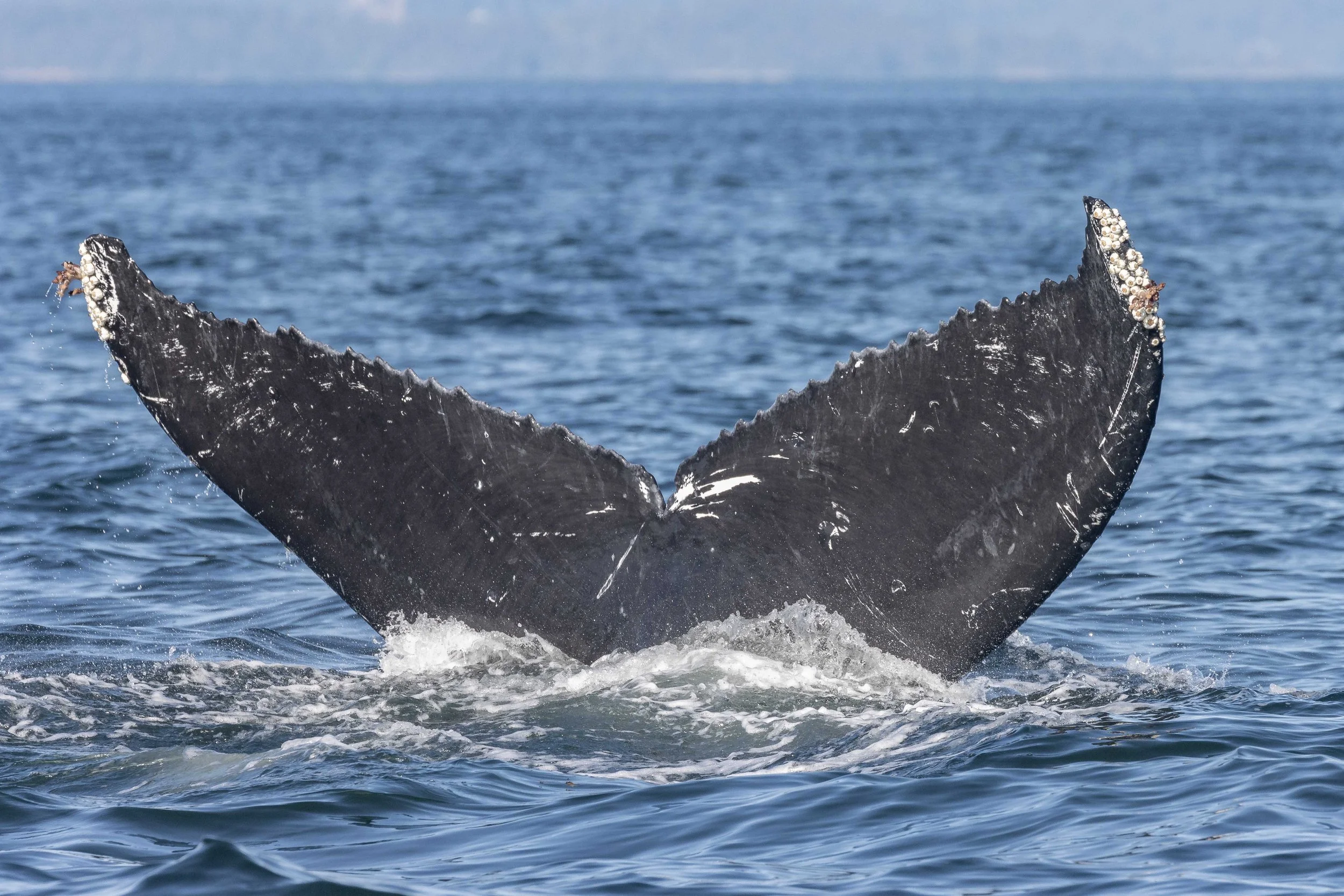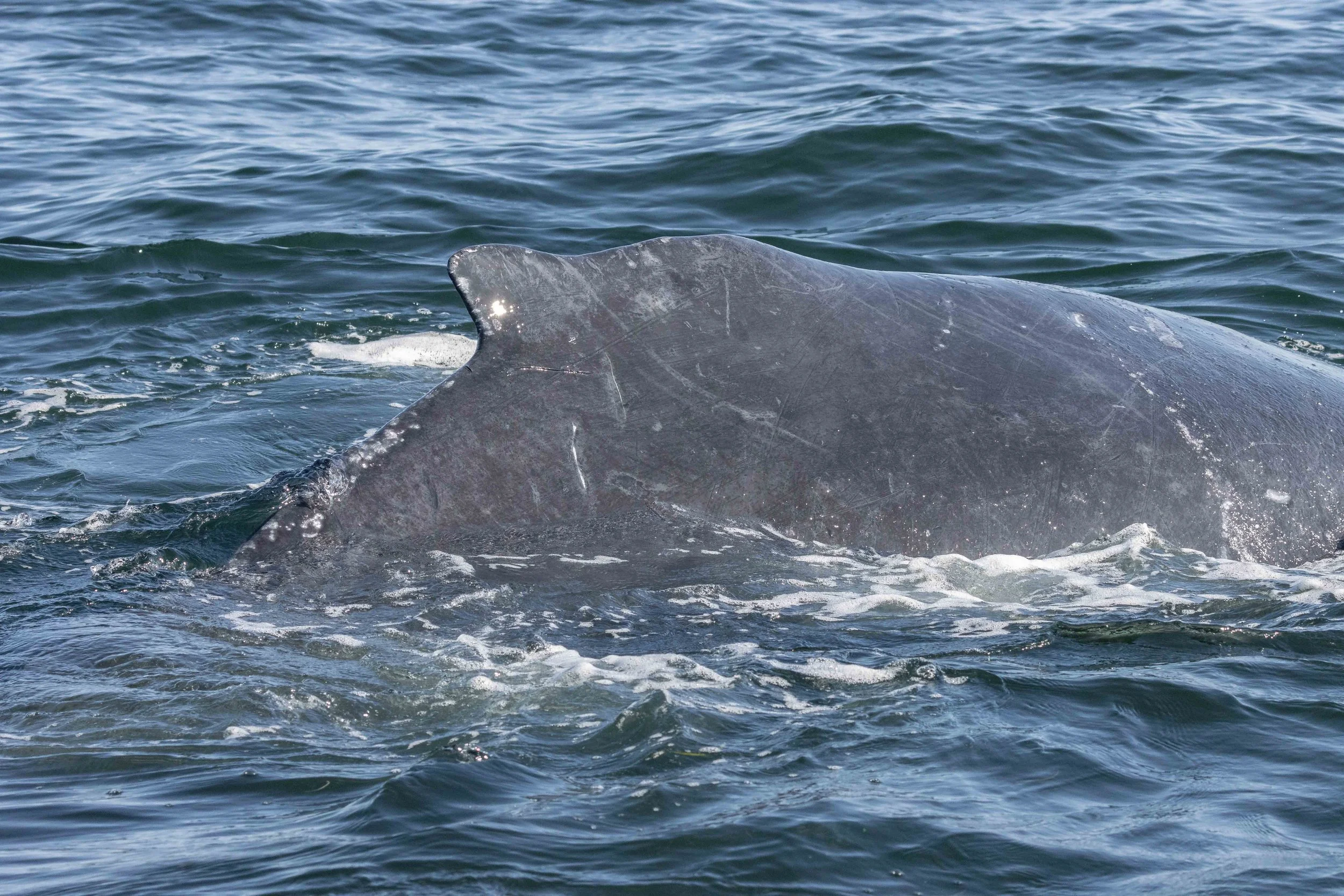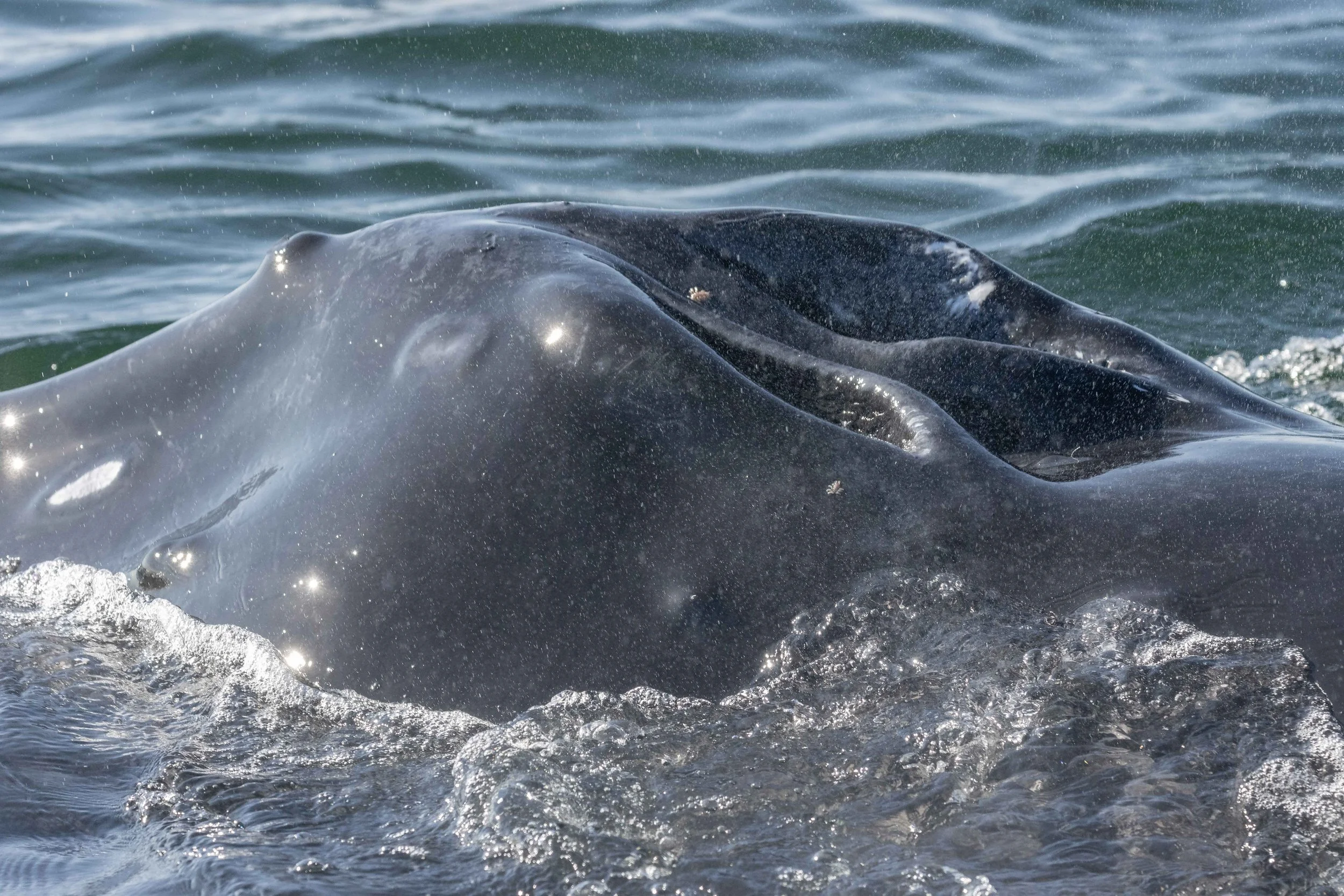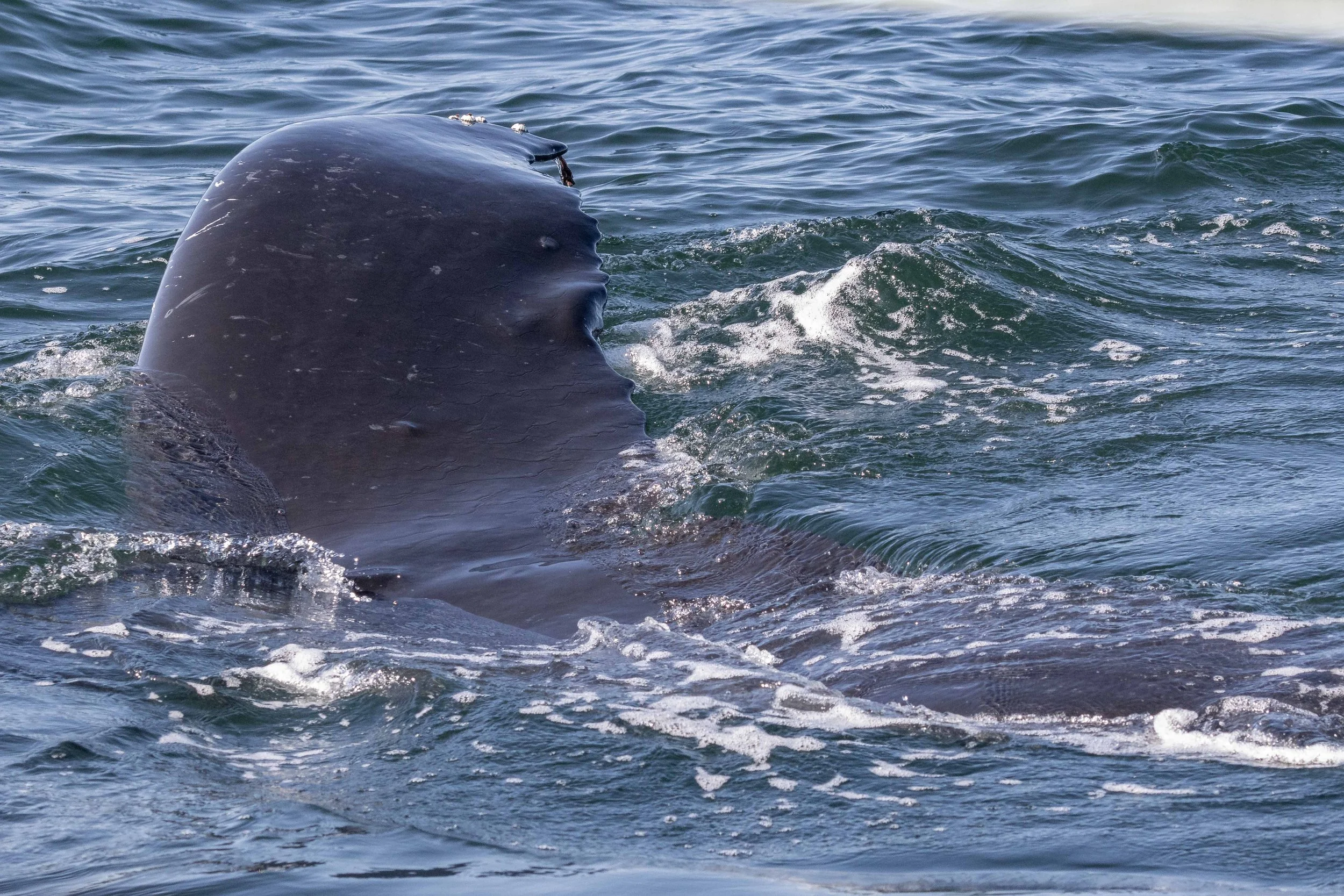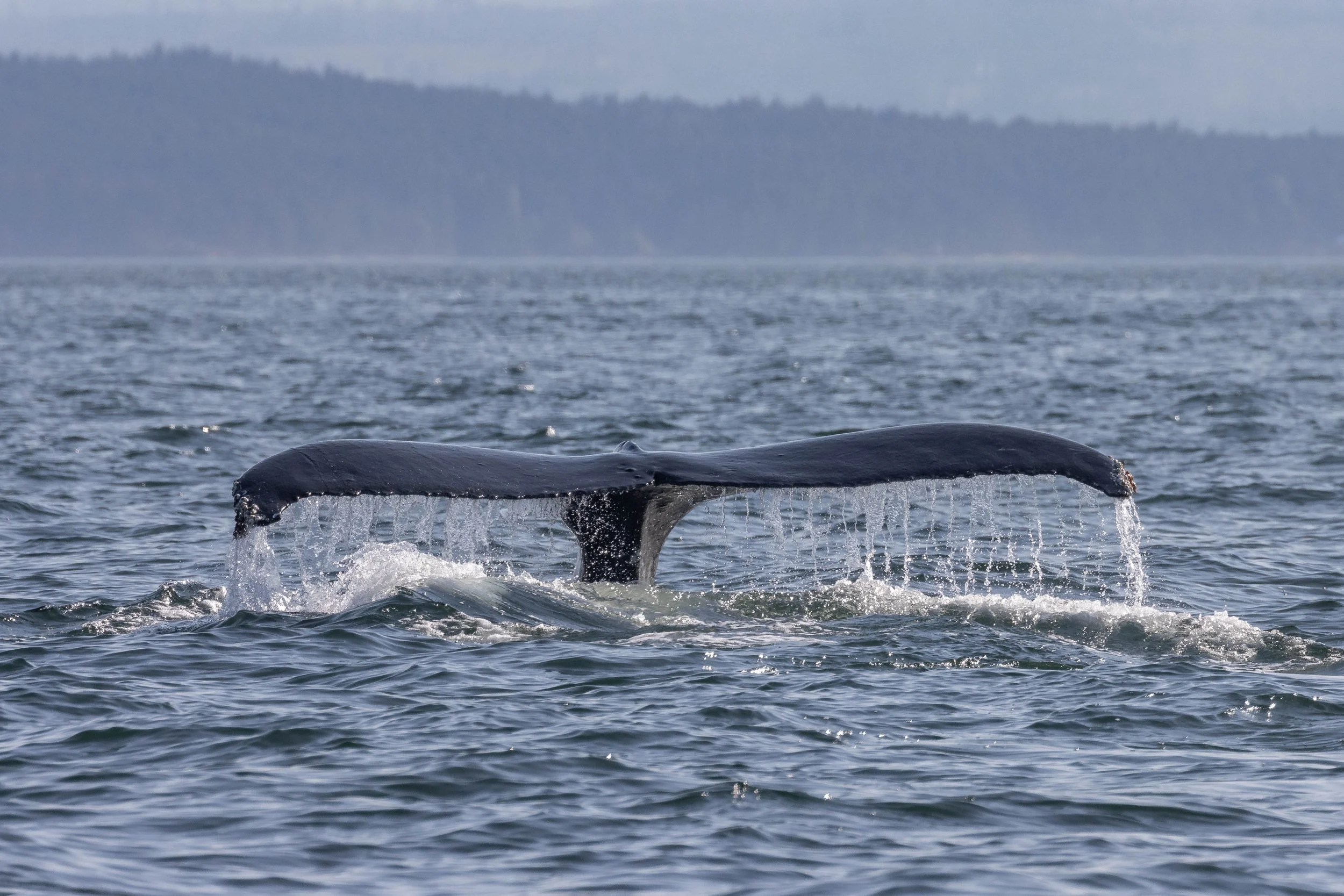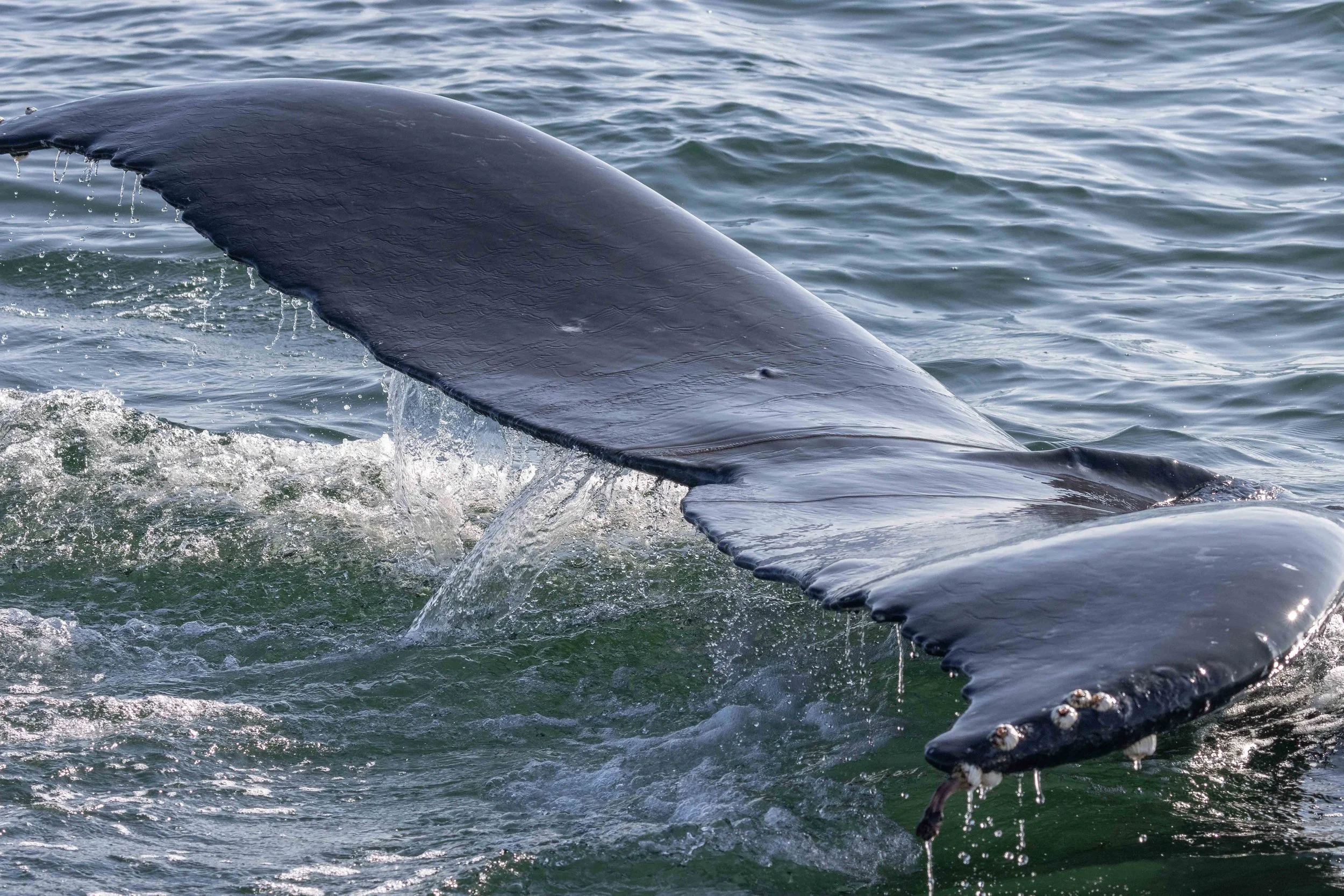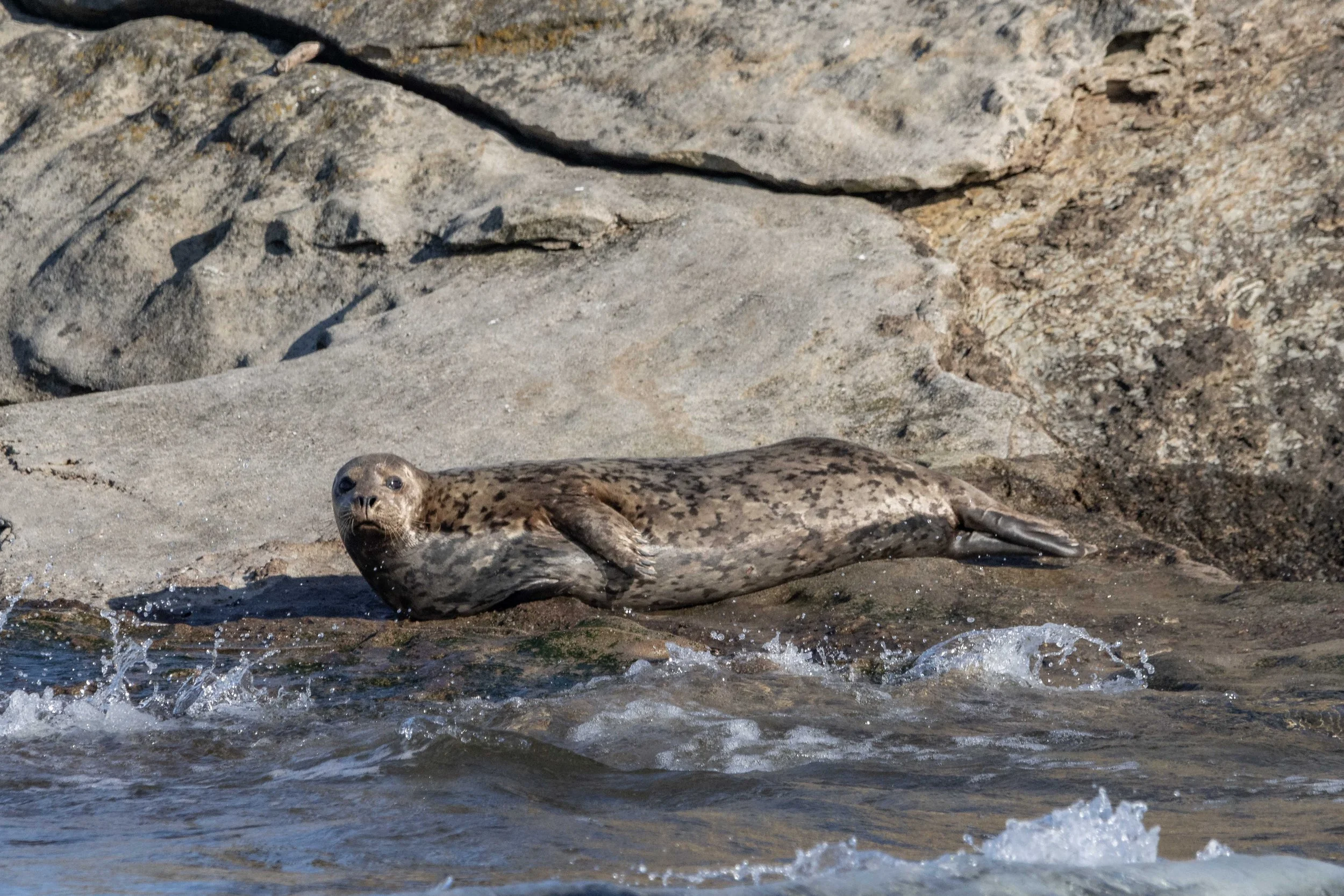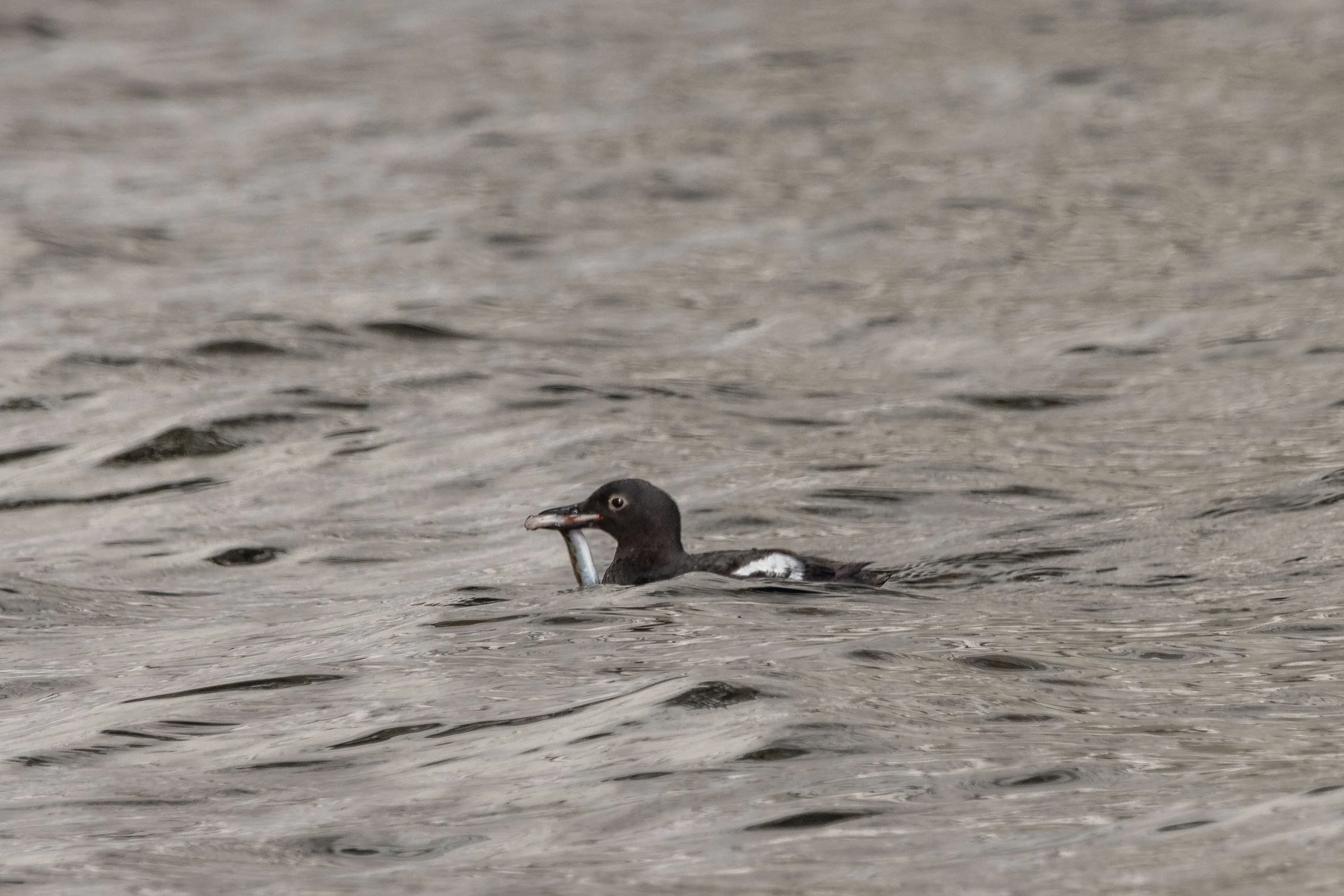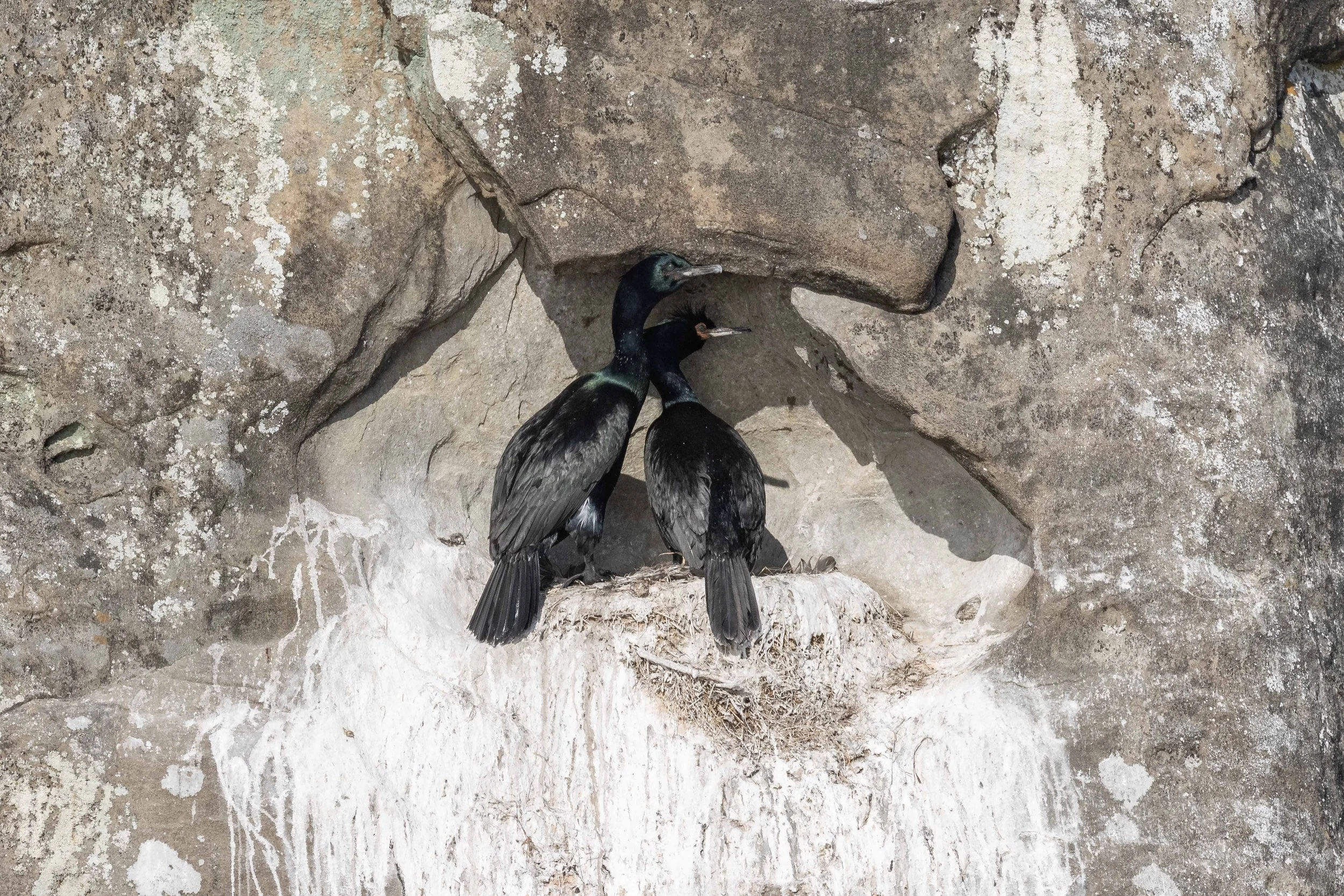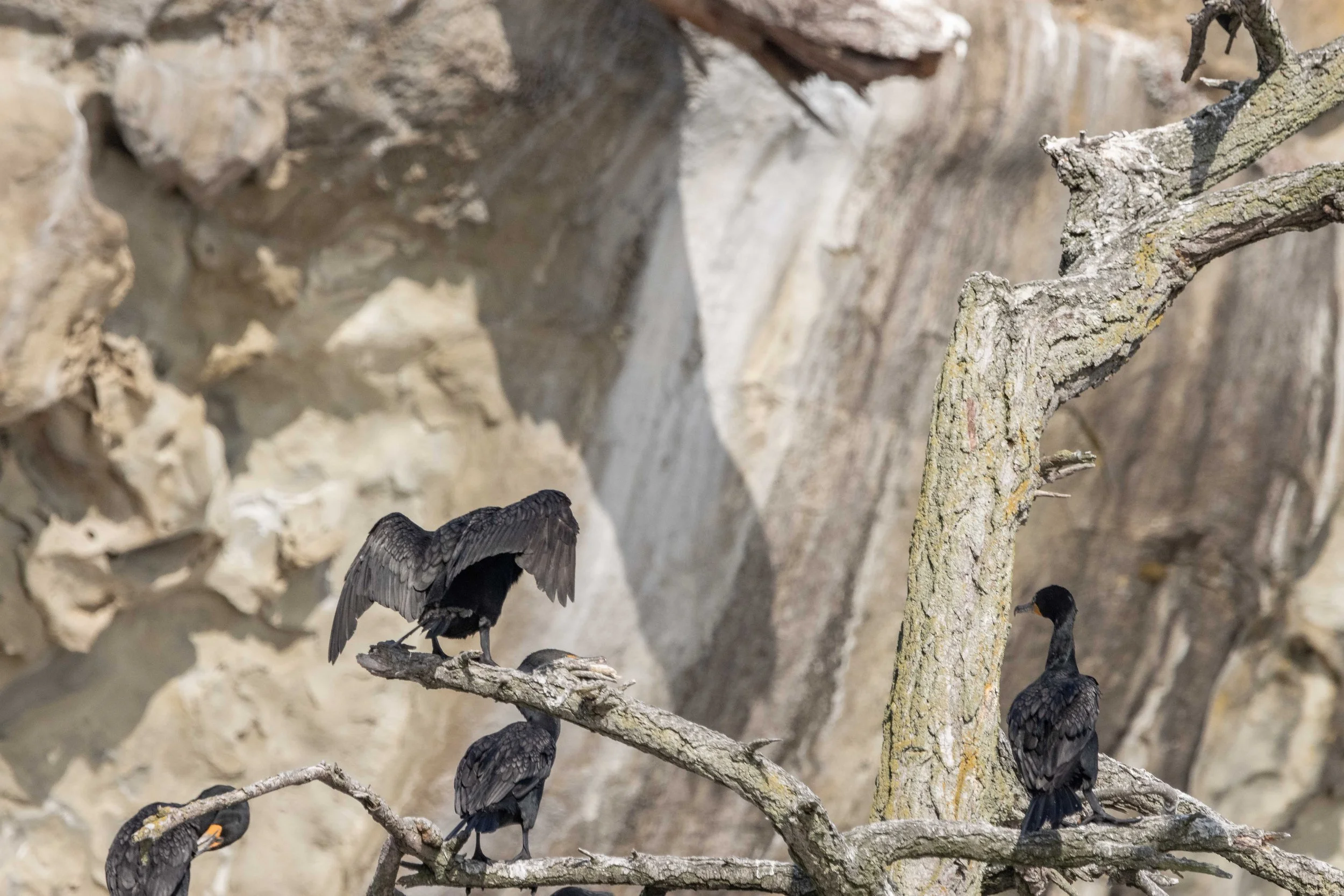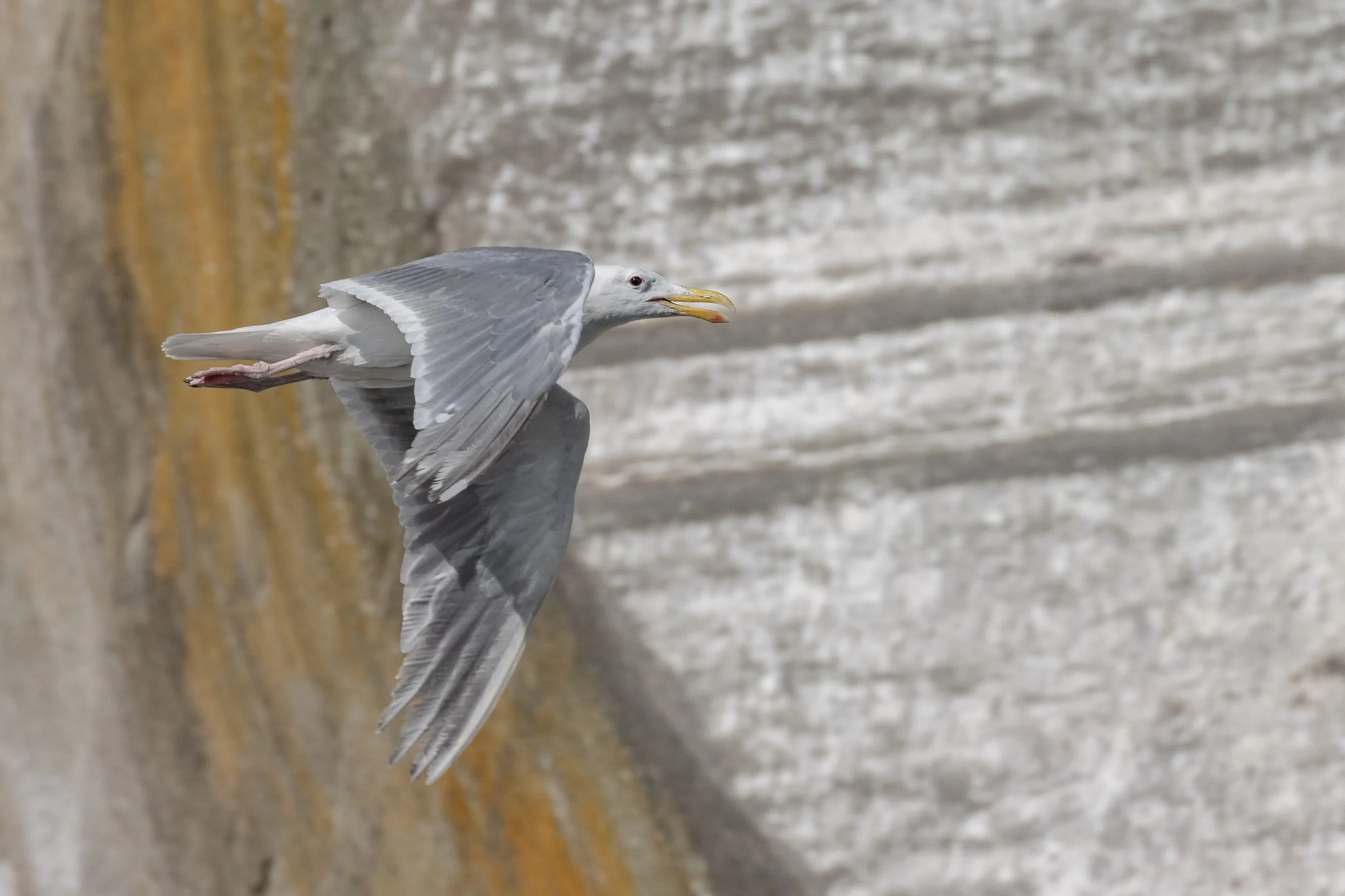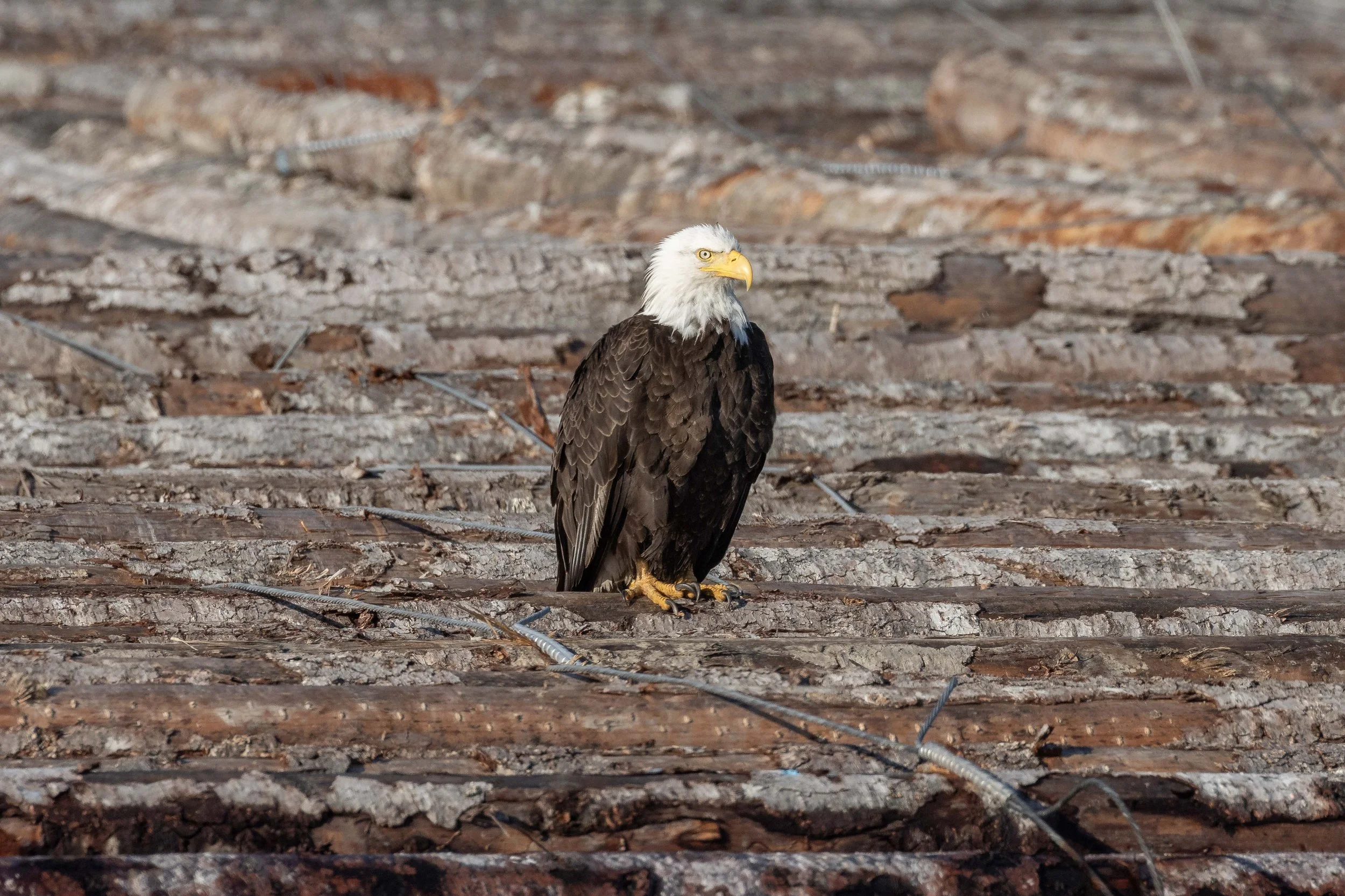July 19, 2024, 3:30 pm - Humpbacks in the Strait of Georgia
It was a sunny, calm afternoon as our vessels Kula and Cascadia left the Nanaimo Harbour and headed out into the Strait of Georgia to search for whales. The morning tour had success in finding a group of humpback whales not too far from Gabriola Island, so we decided to start the search there. They spread out to search a larger area and ended up about halfway across the Strait when the open boat came across something, it was the blows of a humpback whale!
Kula made it nearly all the way across the Strait to the White Islets without spotting a blow, but that’s okay since we got a great look at other wildlife before continuing to the whales that the other boat found. At the White Islets, we typically see Harbour Seals and Steller Sea Lions lounging on the rocks, but there is something else that has got us excited about the area lately, and that’s gulls! There are a bunch of nesting pairs there, and they seem to all have chicks now. We were lucky enough to spot one of the breeding pairs feeding their little fluffy chicks, regurgitating some food which the chicks hungrily gobbled up. A little gross, but a lot interesting!
After leaving the White Islets, we headed over to the other boats and joined with them watching a bunch of humpback whales. The open boat was able to ID the first pair of humpbacks in this area as Split Fluke (BCX1068) and Arial (BCY0767). These two appeared to be feeding in the area, travelling side by side and having synchronized movement as they surfaced for their breaths before arching their back to head beneath the surface. Under the water is where their food is waiting for them. Or more, trying to escape from these Leviathans. Humpback whales are eating machines, consuming up to 1.5 tonnes of food every day. Since they are eating tiny animals such as krill and small schooling fish, this means that they eat millions of animals every day.
On the way over to join in watching Split Fluke and Arial, Kula stumbled across a whale of their own. This whale didn’t end up lifting their tail to help us ID them, but luckily we recognized the dorsal fin belonging to Slice (BCX1057calf2021). Slice was also focused on eating, and without lifting that tail, we decided to leave him to it and continue over to the other humpback whales.
By the time Kula arrived, it seemed that there were some new whales in the mix, and the original pair didn’t hang around to socialize with the others. There were 4 whales here now, travelling in two pairs. Valiant (BCX1773) travelling with Prowler (BCX1660) as well as Coyote (BCX0837calf2021) travelling with Yakima (BCX2182). These four were travelling very close together at first but then spread out with Valiant and Prowler heading towards the mainland, and Coyote and Yakima, heading towards one of our boats. Once it became clear that they had taken an interest in the boats, we immediately shut the engines off and floated there until they had satisfied their curiosity. It can be dangerous for whales to do this, as overfamiliarity with boats can lead to issues for the whales if the boat doesn’t know what is happening, or doesn’t want to wait for the whales to leave them alone. If the engines are on, they can not only create noise for the whales but the moving propeller can physically injure them. Lucky for us, our captains are very experienced and knew exactly what to do in this situation.
While this close encounter was happening, one more whale showed up unexpectedly, it was Beak (BCX1606). Beak did two surfaces, just beside the boat each time, maybe he was joining in on the curiosity under the surface? After the second fluke, he seemed to move on and we didn’t see him again. During the close encounter with Yakima and Coyote, they started blowing bubbles near the boats and under the hull, creating a very interesting sound! It was a pretty unique encounter.
It seemed that the whales finally lost interest in us and moved on, and so did we! We had one final stop along the way, at the Gabriola Bluffs! This amazing sandstone cliff system is typically where we find our nesting Cormorants and sometimes other birds like the Bald Eagles! Today it was just the cormorants though, as they sat in the cracks of the cliffs and on the trees. A bit further south of here, we did manage to spot a Bald Eagle on the log boom though, so that was a great end to the trip!
Photos from today’s tour were taken by naturalists Lucy Willis and Val Watson are all available to view below.
A family of gulls on the White Islets. You can see the parent feeding them on the right. Photo by Val Watson.
Loving parents with their little fluff balls. Photo by Val Watson.
We can spot 9 gull chicks in this photo, can you see them all? Photo by Val Watson.
Steller Sea Lion on the White Islets. Photo by Val Watson.
Cormorants on the White Islets. Photo by Val Watson.
Split Fluke going for a dive. Photo by Lucy Willis.
Arial’s dorsal fin. Photo by Lucy Willis.
Split Fluke lifting her tail to go for a deeper dive. Photo by Lucy Willis.
The top side of Split Fluke’s tail. Photo by Lucy Willis.
Slice surfacing in the waves. Photo by Val Watson.
Slice arching his back for a deeper dive, we never did see his flukes. Photo by Val Watson.
The underside of Yakima’s tail. Photo by Lucy Willis.
Valiant’s dorsal fin in the foreground with Prowler exhaling just behind her. Photo by Lucy Willis.
Coyote making a fluke waterfall as they dive. Photo by Lucy Willis.
Yakima’s pectoral fin. Photo by Lucy Willis.
Likely Yakima’s rostrum as they were curious about the boat. Photo by Lucy Willis.
Valiant surfacing towards the camera. Photo by Val Watson.
A head-on look at Valiant’s dorsal fin. Photo by Val Watson.
Valiant on the left, traveling with Prowler (right). Photo by Val Watson.
Valiant surfacing in front of the Coastal Mountains. Photo by Val Watson.
Valiant arching for dive with Mt. Baker in the background. Photo by Val Watson.
Valiant going for a dive. Photo by Val Watson.
Yakima’s dorsal fin. Photo by Val Watson.
Yakima lifting their fluke for a dive. Photo by Val Watson.
Coyote has a distinct looking dorsal fin. Photo by Val Watson.
Coyote lifting his fluke to dive under the water. Photo by Val Watson.
Beak made a surprise appearance during this encounter! Photo by Val Watson.
Beak making a tall fluke waterfall with his tail. Photo by Val Watson.
The distinct markings on the underside of Beak’s tail. Photo by Val Watson.
Yakima surfacing close to our semi-covered vessel. Photo by Val Watson.
A close up of Yakima’s nostrils! can you see the whale lice? Photo by Val Watson.
A great shot of both species of whale barnacle that are found on the humpback whale. Photo by Val Watson.
Yakima’s 20 foot across tail. Photo by Val Watson.
Yakima going for a dive in the sunshine. Photo by Val Watson.
Our last look at Beak before he disappeared. Photo by Val Watson.
Bye Beak! Photo by Val Watson.
Yakima diving beside the boat. Photo by Val Watson.
Long Harbour Seal is long. Photo by Lucy Willis.
A couple of pups hanging out together on the rocks. Photo by Lucy Willis.
A pigeon guillemot with todays catch. Photo by Lucy Willis.
Pelagic cormorants at the Gabriola Bluffs. Photo by Val Watson.
Cormorants relaxing and drying off at the Gabriola Bluffs. Photo by Lucy Willis.
A fly-by from a gull. Photo by Val Watson.
An adult bald eagle on the log booms just south of the Gabriola Bluffs. Photo by Val Watson.

